Features
APAIT: Positively impacting LA’s underserved communities
One of the main functions of APAIT dealing with sex trafficking is not limited solely to members of the LGBTQ+ community
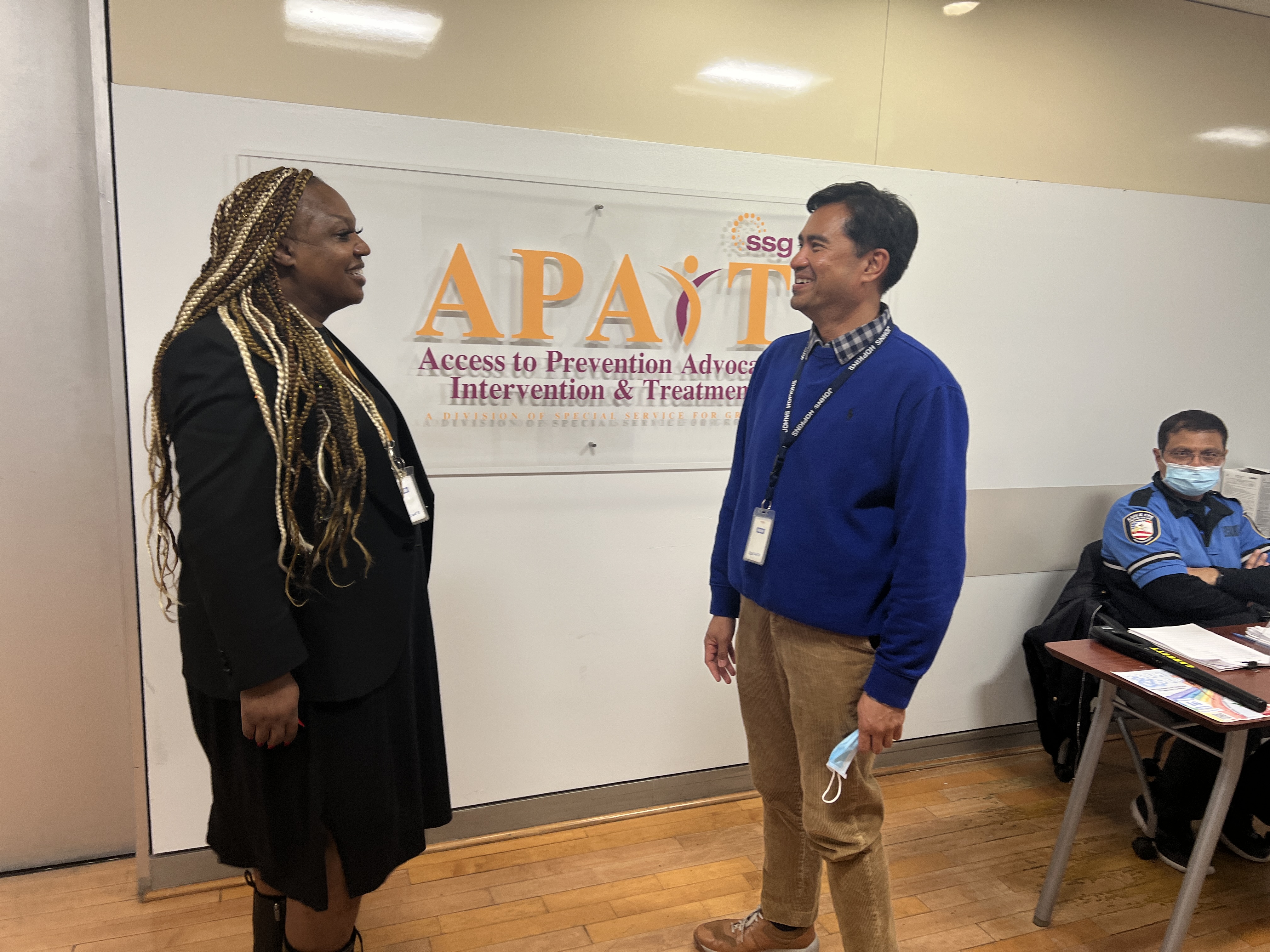
LOS ANGELES – A beacon of hope for underserved vulnerable communities of LGBTQ+ adults in LA can be found in a non-descript almost fortress looking concrete high-rise office building located at 3055 Wilshire overlooking Koreatown.
The offices of the Asian Pacific AIDS Intervention Team (APAIT), whose stated mission is to positively impact the quality of life for those medically underserved communities, is a labyrinth of meeting and counseling rooms, art therapy spaces, offices, and a large, private, outdoor patio for events. The walls are lined with posters of inspirational banners like “Heroes Work Here,” as well as breakdowns of case studies on sex trafficking, mental health, and addiction.
With the Koreatown location plus offices in Orange County, APAIT‘s work focuses on the quality of life for vulnerable people experiencing behavioral health challenges, housing insecurity, and who are at-risk for HIV/AIDS.
“I know the lingo everyone uses is BIPOC,” Jury Candelario, a licensed clinical social worker and the Executive Director told The Blade. “But for us, we say communities of color. Even in our staffing, we try to reflect our consumers. This is how we roll. This is our mission and we have to reflect the community that we serve.”
Candelario explained that APAIT started thirty-five years ago with a focus on the HIV/AIDS crisis.
“We started out really grounded in the work of HIV/AIDS primarily addressing grief counseling for gay Asian men,” said Candelario. “Many of these men died alone from HIV/AIDS because most of their families didn’t even know they were gay let alone they were dying from the disease.”
Overtime, APAIT expanded their services not just to HIV/AIDS, but to a broader range of sexual health issues. APAIT deals with a range of issues not just impacting gay men but those that impact the larger queer community.
“The core pillars of APAIT services are sexual health, behavioral health, housing, forensic treatment, which is basically for folks who are coming out of jails in prison, and human trafficking,” Candelario emphasized.
A Broken system
Even with four different offices and seven different housing sites, the organization often has to outsource resources due to the high need for their services. Jazzmun Nichcala Crayton, Associate Director, told the Blade that the American socio-economic system is in large part to blame.
“They say the system is broken,” said Crayton, “but no one really knows how to navigate the system. Plus, the system was never designed with people of color in mind, so you are asking us to perform at a level and to perform in ways that we were never trained or designed or had the opportunity to. We were never given access to that information.”
Crayton explained that the system often produces broken homes, especially within at-risk communities of color, leading to a cycle that can often feel impossible to break.
“If your mother was in survival mode, and she was a single parent, and you are coming up through that system and that way of life, the only way you’re going to break the chain is to break the chain yourself. It is very difficult for a child to make that shift. Already they are familiar with poverty, they are familiar with not having. That’s not the story for everybody, but that’s the story for a lot of people. You see it a lot,” Crayton noted.
“If you don’t have all those dynamics like a mother and father, making a certain amount of money to provide for a family, that causes a lot of problems. A lot of times, you see Caucasian counterparts where the mother does not work, and she gets to stay home and be the caregiver and nurture the children. But even that is changing in our society. More and more often, the parents are out of the home. Children end up raising themselves and end up fending for themselves because everyone is trying to make money so that they can live a certain way.”
“But can you imagine people of color with more than one child? Often, especially in Black families, the father is absent for whatever reason, so the mother is the matriarch, running the entire household, trying to work and go to school and provide for children.”
“People use this term ‘strong Black woman,’ but Black women don’t want to be strong all the time. Women don’t want to be strong all the time,” she added.
According to a pre-COIVD survey by the Williams Institute at the UCLA School of Law on Victimization Rates and Traits of Sexual and Gender Minorities (SGMs) in the United States, SGMs are at greater risk of experiencing violent crime than their white cisgender heterosexual counterparts.
The Williams study showed that LGBTQ+ people were nearly four times more likely than non LGBT people to experience violent crime. The odds of experiencing a violent victimization were higher for SGMs than non-SGMs .
SGM persons experienced more criminal victimization than non-SGM persons. SGMs experienced 71.1 violent victimizations per 1,000, compared to 19.2 per 1,000 among non-SGM persons.
SGMs had a higher rate of serious violence, defined as rape or sexual assault, robbery, or aggravated assault, than non-SGMs, including higher rates of violence involving a weapon and violence resulting in serious injuries.
“There have been increased attacks in the Asian community,” acknowledged Candelario. “Unfortunately, I would say hatred got bigger with COVID-19 and how it was blamed essentially on the Chinese community by the last administration. It [coronavirus] was called ‘the China flu,’ so there’s definitely a lot of that influence in that.”
APAIT offers self-defense classes as part of their program to help women who find themselves the victims of attacks. The staff are also encouraged to take these classes. As Candelario pointed out, “No one is safe. We are all at risk.”
While the rise in hate crimes has propelled the self-defense program, the classes initially started after a group of trans women were conducting a makeup class for gender representation at APAIT. The class itself was broken into and robbed, leaving the women defenseless and scared.
When asked why queer people of color are so often particularly affected in statistics like those from the UCLA study, Crayton said that she blames the social dehumanization of queer people within society.
“We get dehumanized on a daily basis,” said Crayton. “Our humanity is laughed at. It is ridiculed. There are policies in place all over America to prevent us from even trying. We don’t even get a chance to try as a whole.”
“We are very special here in California. We have different dynamics, but some of our siblings in other states are limited by the law. They can’t do a Drag show anymore in Tennessee. I mean, what is that? Why is that important? Our purpose is to educate to bring these people up so that they can go out in the community and provide for themselves.”
Candelario added that words like “faggot” and “groomer” which are deeply ingrained in right-wing rhetoric, help to propel this dehumanization and so should be eradicated.
“I think we have to watch trauma informed language,” said Candelario. “The words that we use impact how people are perceived.”
Sex Trafficking
One of the main functions of APAIT dealing with sex trafficking is not limited solely to members of the LGBTQ+ community. The organization often serves cisgender women in an industry that is notorious for acting as a sex trafficking cover.
“About two decades ago, we got into working with massage parlor industry,” said Cadelario.
According to a 2019 survey by APAIT, women often chose illicit massage parlor work from a very small number of employment options. Some women described being coerced or deceived into this work, but most women said that they chose this work as their best alternative.
Among limited options on the positive side, the pay was higher than in other industries, and could provide opportunities for self-employment. On the negative side, they were at risk for physical abuse, HIV and other STI’s, and mental health problems such as isolation arising from stigma. The risk of violence from clients and owners and robbery in this cash-based industry and possible arrest fines and jail were also threats, as was deportation in the case of undocumented immigrants.
Human Trafficking Indicators according to the U.S. State Department include:
- Living with employer.
- Poor living conditions.
- Multiple people in cramped space.
- Inability to speak to individual alone.
- Answers appear to be scripted and rehearsed.
- Employer is holding identity documents.
- Signs of physical abuse.
- Submissive or fearful.
Fear of arrest stops many women from coming forward. Fear of arrest almost always superseded fear of robbery or assault in a pre-Covid study. Many women were reluctant to seek police protection. Women who did not read or speak English were often unaware of what was happening after their arrest, leaving them vulnerable to predatory laws or those posing as lawyers, both in their criminal proceeding as well as their immigration cases.
Nan Ding, the Senior Clinical Program Manager runs the APAIT pilot related to sex trafficking alongside Candelario. She is a also a licensed clinical social worker.
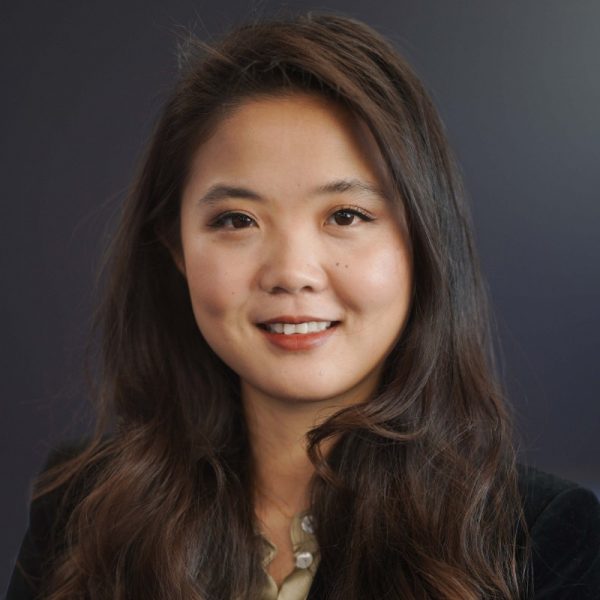
“It started out with a court order program,” she explained. “This is mainly for people who work in massage parlor work, who were given a citation for suspicion of prostitution.”
This citation is part of what is known as a diversion program. Pretrial diversion programs in the state of California allow defendants who are eligible to avoid serving jail time as long as they complete treatment and education courses.
“We provide sexual health education and resources and mental health,” Ding told the Blade.
English lessons are also crucial to rehabilitating these women.
“Given the demographic of people who come to us through this program, many of them do not have the ability to speak English. All of them are immigrants, so we connect them to one of our social services which help them to live sustainably on their own.”
While some success stories do exist, Ding explained that it can often be years before these women are properly rehabilitated.
“To be honest with you, it has been quite challenging,” said Ding. “Because they don’t have degrees and they don’t speak English. We encourage a lot of them to go through cosmetic training so that it’s less risky for them, and it brings better income for them. A lot of them end up doing administrative work. One of my clients is now working at an acupuncture clinic at the front desk.”
Ding said that many of these women come here under false pretenses in hopes of a better life, only to be duped and stuck as pawns in sex trafficking rings.
Ding gave an example of one client in particular: “She went through trafficking in Taiwan through here she tried to escape. She came here, thinking she was going to be put her through nursing school to be an RN but the moment she landed here she was sent to be a sex worker.”
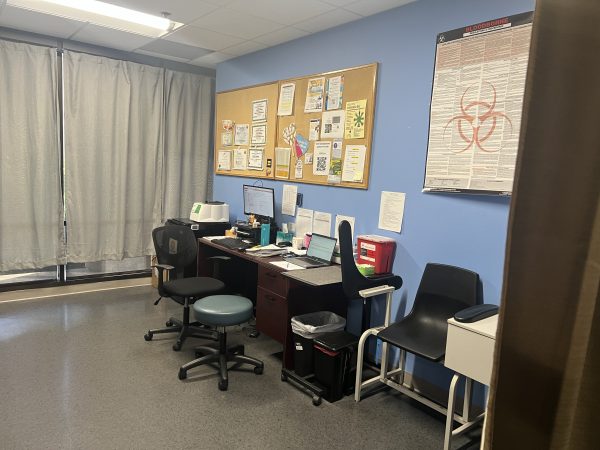
“This happens more often than you think,” said Candelario. “The sad part is this is a whole international syndicate of illegal organizations that run this human trafficking. We are definitely not saying all massage parlors are, but many are fronts for human trafficking not just human trafficking in the sense of sex work and/or labor trafficking. A lot of these people are recruited under the pretense that they are going to have work or schooling here. They prepare all their paperwork and documentation to get here legitimately, but once they land here, those documents are still with the syndicates not with those folks who were brought here. Essentially, they are trapped.”
“They are trapped once they get here. They don’t have any other recourse because this is their livelihood now. This isn’t just isolated in Asian communities it’s happening in central American communities too. It’s everywhere. Eastern European communities as well. Unfortunately, we also see these horrible stories of fourteen and fifteen-year-old children, young girls, being kidnapped here as well. Colored communities and foreign communities are vulnerable too as are communities without privilege and opportunities and education. The people who brought you here are the people you are supposed to be trusting for this ‘American dream,’ which ends up being an American nightmare,” she added.
Candelario also made it clear that APAIT does not condemn sex work as a legitimate form of employment. The problem lies in deceit and forced labor.
A Success Story
Those seeking help come to APAIT through a variety of ways. Many are found by APAIT on the streets through their grassroots program “Midnight Stroll.”
The Midnight Stroll and After Hours Café was launched by the Asian Pacific AIDS Intervention Team in January 2017 in collaboration with the Los Angeles Transgender Advisory Council and The Wall Las Memorias Project, along with support from then LA Councilman Mitch O’Farrell, the Los Angeles Police Department and several community partners.
Under the program, volunteer outreach workers walk along Santa Monica Boulevard, from Vermont Avenue to La Brea Avenue, to provide water, food, and clothing vouchers, while also promoting HIV testing and other services. The program also provides some emergency shelter beds.
“When I started,” said Candelario, “I remember doing this kind of outreach and grassroots work. At the time, our main focus was ending the crystal meth epidemic. We were health educators, promoting health reduction systems to reduce crystal meth use. It’s about meeting the clients where they are.”
Many clients come to APAIT when they have nowhere else to turn.
“We had a client come in off the street with a sheet on her head and dirt on her face,” said Crayton. “She came from Alabama. She was ostracized and criminalized for being trans there. She had been kicked out of her home. She made her way up to California, which was complicated because she had no support system. She came here just hoping that the community would be able to guide and support her.”
“When she came to us, she had nowhere to go and she didn’t want to sleep between the buildings anymore. We were able to house her through a private organization immediately in South Los Angeles. Mr. Jury was generous enough to pay for her to stay there where she developed under our care.”
“She kept coming back to the office and participating in our programs. She had access mental health with her behavioral health counselor. She actually started interning somewhere at some point and from there she did so well she was able to obtain and sustain her own apartment. Because we were able as an organization to come together and surround this particular client with support and guidance and love, she was able to stand on her own two feet.”
“Now she is providing services for the community. She is going the kind of work that we are doing, and she is back in school studying to be a therapist. She was even honored by Laverne Cox, who gave her an award saying that she was a pillar in the trans community coming from such extreme circumstances in life.”
Features
Where craft meets community: Inside Zion Liu’s and Christian Leon’s small biz ‘Here & Always’
In a season dominated by Black Friday frenzy and mass production, Here & Always rises above as a purpose-driven & queer-founded marketplace born from a desire to share beautifully crafted & deeply meaningful objects rooted in community
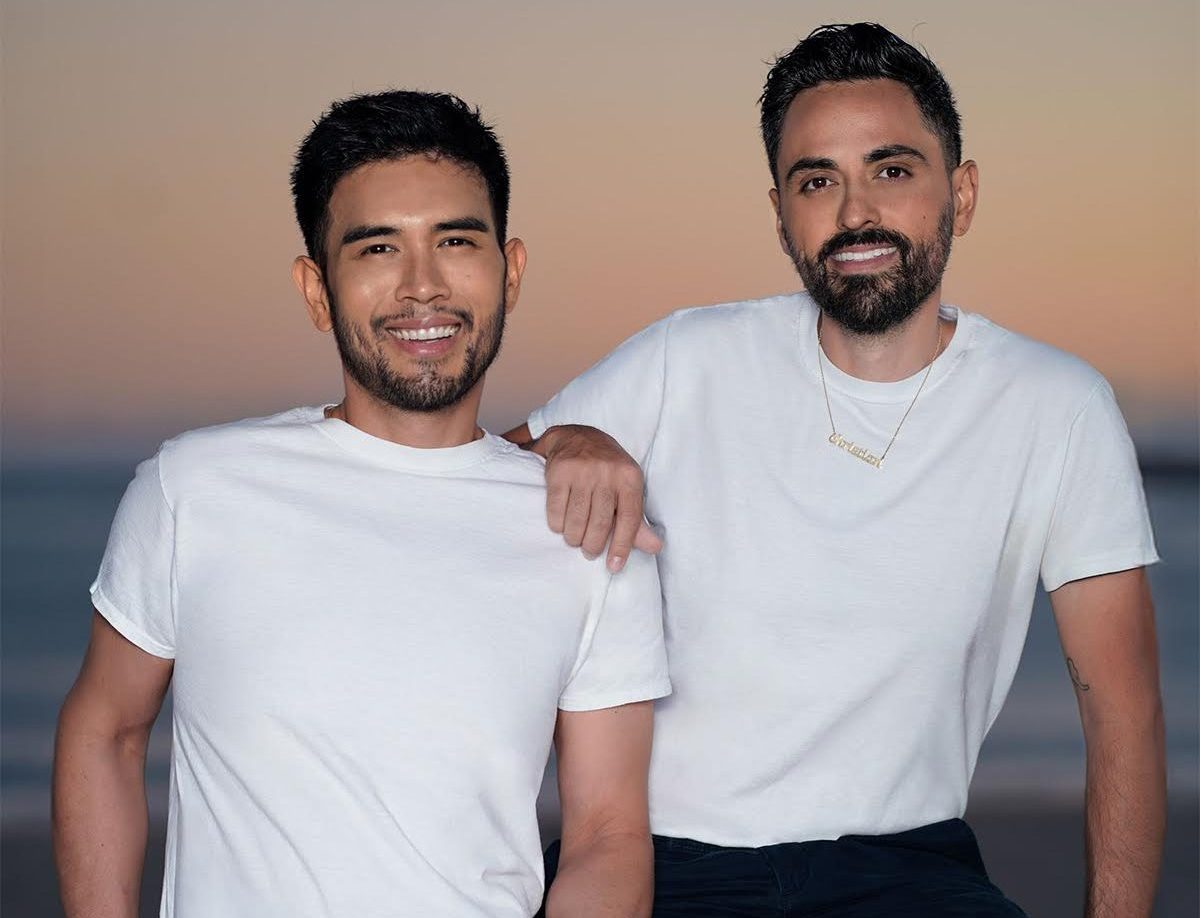
As Black Friday nudges consumers toward the trenches of Amazon, Here & Always stands in warm contrast – a slow, intentional marketplace built from heritage and heart. Founded by Zion Liu and Christian Leon, two queer, first-gen creators who couldn’t find a place that reflected their own identities or the makers that they admire, the brand was birthed from a simple desire: to gift beautifully wrapped, meaningful objects made by real hands and rooted in real stories. What began Liu and Leon’s love of gifting and design quickly evolved into a purpose-driven platform that uplifts queer, immigrant, independent, and allied artisans while reimagining what modern, values-led commerce looks like.
What ignited your inspiration to start an artisan marketplace, and when did you first realize it could grow into a business?
We built Here & Always because we could not find a place where we could gift beautifully wrapped, intentional pieces made by hands and hearts that reflected our own. Queer, first-gen, immigrant, independent, and allied makers all in one place, in one easy experience. So we set out to build it.
The funny part is that it did not start as “let’s build a marketplace.” Zion has always dreamed of a Candy Spelling–level gift-wrapping room, and I am the person who goes way too hard for holidays and gifting. We are both obsessed with home, renovation, and timeless design, so we knew whatever we did together would live in that world of objects and beauty.
Last year we left corporate life to build something with purpose. The first idea was simple: wrapping paper and packaging that reflected the diaspora of LGBTQ+ life, chosen family, and our family roots. The plan was to sell on an existing marketplace and keep it moving.
Then we saw how those platforms actually work, how they profit even when small brands do not, and how quickly major retailers were rolling back DEI and treating “support” as seasonal marketing. That was the turning point. Here & Always stopped being a single product and became a home: a marketplace built by us, for us, where value flows back to makers and the communities they come from, and where the person behind the work is never erased. That is when we knew it could and should be a real business.
Eighty percent of your founding brands are LGBTQ+-owned. Why was queer representation essential to the DNA of Here & Always?
Queer representation is essential because it is our reality. We are queer, and the people who shaped our taste, our sense of home, and our idea of beauty have always been queer, too. For decades, queer makers have set the tone for culture, but they are rarely the ones who benefit when their ideas go mainstream.
At Here & Always, that had to change. Most of our founding brands are LGBTQ+-owned, and alongside them are our allies from immigrant, Black, Brown, and Asian communities who share these same values. Representation is not a seasonal campaign for us; it is the foundation of our marketplace. Diversity is not the side story; it is the core. Structuring the business this way lets us redirect money, visibility, and long-term opportunity back to the communities that have always been quietly leading the way.
Your brand is rooted in heritage, queerness, and community. How have your personal identities influenced the aesthetic or themes of your brand?
Our aesthetic really started at home. Long before Here & Always, we were renovating and restoring homes after we’d worked our day jobs. Our last project before this brand came to life was a midcentury house we restored stud by stud, doing a lot of the work ourselves. We’ve also never been fast-commerce consumers; we would rather save for one beautiful object than buy five disposable ones. Everything we brought home had to feel timeless, well-made, and built to last for years. That lens is baked into the brand.
Layered on top of that is who we are: queer, children of immigrants, raised in Los Angeles. We grew up around altars, candles, plastic-covered sofas, crowded tables, and objects that carried huge emotional weight. Those memories show up in Here & Always as “everyday luxuries” that feel a little sacred: candles, matchboxes, keepsakes, and home pieces that are meant to anchor a space, not just decorate it. The result is an aesthetic that feels like a lived-in shrine, clean and design-forward, but full of story, heritage, and a sense of community you can actually feel when you hold the objects.
Let’s talk challenges. What are some of the biggest obstacles you’ve faced as a small business owner, and how did you come out the other side?
Taste vs Values. We refused to choose between design and thoughtful sourcing. That meant more research, more conversations with artisans, and saying “not yet” to products that were almost right.
Craft vs Margin. Reusable keepsake packaging, recycled materials, and small-batch production don’t automatically play nice with startup math. We quickly learned to redesign, simplify where needed, and remove anything that didn’t add meaning along the way.
Infrastructure vs Story. We’re a marketplace, not a single-SKU brand. That meant building all the tech/ops (Shopify stack, fulfillment logic, product data, reviews) while writing a story that could hold many voices and still sound uniquely like us.
If you could collaborate with any artist, company, or creative, who would it be and why?
Because Here & Always is built around multiple brands, it never feels quite right to single out a “dream” collaborator without making others feel lesser by omission. In many ways, we are already collaborating with our dream partners: the artisans and studios who trusted us early and whose work shapes the soul of the marketplace.
More broadly, our ideal collaborators are people and institutions who treat objects as portals, not just products, and anyone who cares as much about story and community impact as they do about design. If a collaboration helps us pour more resources back into makers and the communities we love, then that is the kind of “dream project” we are excited to say yes to.
How has the cultural and political climate around queer and immigrant communities shaped your mission?
Being queer-founded and LA-based is our foundation. Our identities and origins inform everything we do. We have learned that visibility matters, that luxury does not have to exclude queer, BIPOC, immigrant, or allied communities, and that home can be a sanctuary of authenticity instead of a place where you shrink yourself.
Los Angeles is a city of reinvention and layers. It reminds us daily that culture is not homogeneous, that style and substance can coexist. Against a backdrop where social and political pressure on marginalized identities is very real, we are not interested in building only as a reaction to harm. We are building for what is possible: a marketplace where queerness or diversity is not a search filter but part of the fabric, where the makers we uplift reflect a wide spectrum of identities and experiences, and where “good taste” is not coded for a select few.
That climate also makes the work feel like a responsibility. Being rooted in LA means engaging with community, supporting local artisans while holding a global perspective, and aiming for a ripple effect—job creation, visibility, and a more inclusive idea of luxury. For us, it means every object that ships from Here & Always carries the imprint of someone who did not have to leave their identity behind to make something beautiful. That matters now more than ever.
Do you feel small businesses have a responsibility to take a stand on social issues, or is it best to stay neutral?
We do not believe there is a single rule every small business has to follow. Safety, resources, and context all matter. But we also know that for many of us, especially queer- and immigrant-founded brands, “neutrality” is not really neutral; it often defaults to the status quo.
For Here & Always, our fight is the same fight as the communities we come from, so we chose to build our values into the structure of the business instead of only into statements. We take an activism through craft approach: beauty and design come first, and then there is this “nice surprise” that your purchase is supporting small-batch artisans, queer and BIPOC makers, and giveback initiatives.
We would rather invite people in than lecture them. A lot of our customers are still learning how predatory big marketplaces and mass retail can be; we were too, until we started building our own. So our role is less about telling everyone what to think and more about creating a different model in practice, and letting people discover that they are part of something bigger than just the object in their cart.
Growing up in Los Angeles as children of immigrants is central to The Purpose Candle Collection. What childhood moment or memory most encapsulates that sentiment or experience for you?
The Purpose Collection is really three chapters from our lives and our co-creator Earthy Corazón’s life. We are all children of Latino immigrants, and you can feel that most clearly in the scent we now call Mezcal Moon. In testing, its working name was “Sunday Cooking With Family,” which is really the core memory.
For us, Sundays in Los Angeles meant gathering with the family for the carne asada. There is a fire growing in the grill, tías and tíos dropping by, cousins running through a too-small apartment or backyard, someone putting on music while the TV hums in the next room. You smell food being prepared, share old stories and make new ones.
Mezcal Moon was built to smell like that, like being held by family, by food, by memory. It is our way of bottling that specific experience of growing up as children of immigrants in LA and turning it into something you can light, wherever you are, when you need to feel that kind of home again.
What does it feel like to see customers resonate with products grounded in queer and immigrant narratives?
We are still at the very beginning, so every order feels personal. Any time someone chooses to spend their money with us, especially in a crowded market, it lands as a real act of trust.
When that choice is for a product rooted in queer and immigrant stories, it feels like a double affirmation: that our communities deserve to be centered, and that there is room in “luxury” for narratives like ours. It is validating and humbling at the same time.
We built Here & Always so people could see themselves, their families, or the people they love reflected back in what they gift and keep. To watch even the first wave of customers respond to that makes all the risk and work of starting feel worth it.
You describe your approach as “regenerative commerce.” In your experience, what does giving back more than you take look like in practice?
For us, “regenerative commerce” is a simple test we put against every decision: does this give back more than it takes, from people, from community, from culture?
In practice, that looks like a few things. On the product side, it means prioritizing small-batch, thoughtfully made objects over disposable trends, and working with artisans who are already trying to tread lighter in terms of materials and waste. On the people side, it means structuring our marketplace so makers can actually thrive, respecting their pricing, not squeezing margins to the breaking point, and centering queer, BIPOC, and our allies’ brands instead of treating them as a seasonal feature.
And on the community side, it means building giveback into the model, not just into marketing. A portion of what we do is always pointed back toward impact partners and on-the-ground work. The aspiration is that every product gives back, every purchase uplifts, and every story matters, not just in theory, but in the way money, visibility, and opportunity move through the business.
Why was it important to you that 100% of profits from The Purpose Candle Collection support community partners like Make Good, Inc.?
The Purpose Collection was born to be a proof point of that philosophy. We did not want a “greenwashing” donation model; we wanted a line where the primary job is to fund impact.
Giving 100% of profits from this collection to community partners like Make Good, Inc. was our way of saying: this is what a for-purpose business can look like. We want our entire marketplace, over time, to be using profit for good, not for greed or distant shareholders, and the Purpose Collection is the start of that, a clear line connecting beauty, story, and real-world impact.
Here & Always is described as a movement. Five years from now, what impact do you hope this movement will have on makers, customers, and culture?
We call it a movement because when you shop with Here & Always, you’re not just choosing something beautiful. You’re helping small businesses grow, redistributing economic power, and building a more equitable supply chain one gift at a time. Every product is made by real hands, real people.
Five years from now, we hope that shows up clearly. We want our communities to be thriving, hiring teams, raising their prices with confidence, and feeling supported by a marketplace that protects their value instead of eroding it. We want our customers to expect that the most beautiful objects in their homes can also be the most ethical and story-rich, and to see their purchases as a quiet way of voting for the world they want.
Culturally, the goal is for this model to feel less radical and more like the norm. If in five years it is completely unremarkable that a “luxury” marketplace is queer-founded, values-led, and transparently supporting small-batch artisans, then we will have done our job. Here & Always is our way of redefining commerce as something sustainable and regenerative, where every story and every purchase can move things a little closer to the world we want to live in.
Visit HereandAlways.com
Features
Trump’s shocking White House East Wing amputation — and the painful fallout Americans won’t ignore
Gay Social Secretary Jeremy Bernard on the importance of civility
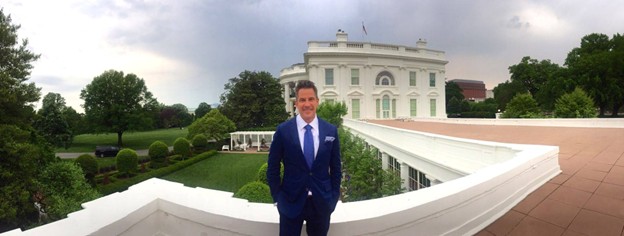
Since Jan. 20, 2025, life in Donald Trump’s divided America has been a series of jaw-dropping split-screen scenarios, flashing at an even faster pace since the resounding anti-Trump, pro-affordability Democratic electoral victories on Nov. 4. But while the weeks before Thanksgiving have injected hope that the No Kings marches, the rule of law, and the 2026 midterms will uphold democracy, Trump’s violently oriented MAGA and Christian National base and his committed Project 2025 backers continue remaking the federal government and fighting the culture wars.
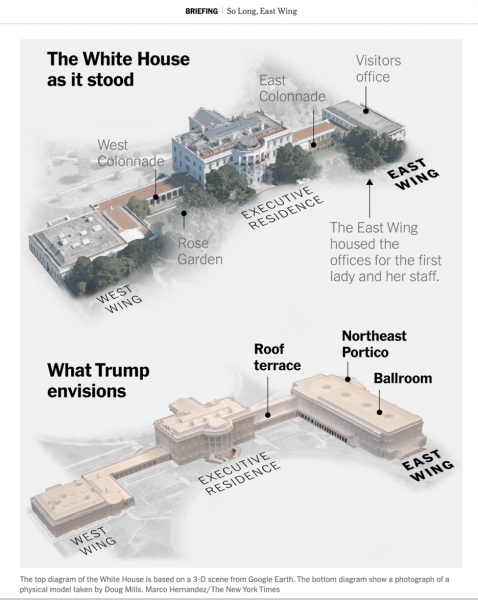
Luxuriating in his own narcissism, Trump ordered the clandestine demolition of the East Wing on Oct. 23 to make way for his 90,000 square foot ballroom. He apparently didn’t care about the national shock at the brutal amputation of America’s beloved cultural arm that balanced the hard political arm of the People’s House.
“This isn’t a real estate deal. This is a living, breathing building. It actually hurts, as a citizen. It’s us. It’s our home. This doesn’t belong to anybody except the blood, the sweat and the tears of every president,” new Washington, DC resident Roseanne Siegel told NPR.
“For historians and for Americans who love their history, this is a big blow,” said ABC News presidential historian Mark Updegrove.
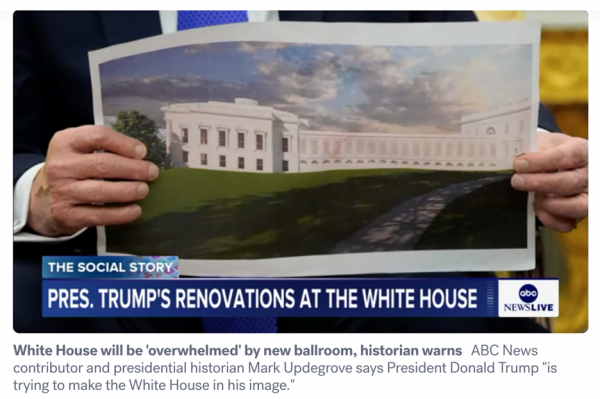
According to an Oct. 30 poll from the Washington Post, ABC News, and Ipsos, 56% of respondents disagreed with Trump’s move while 28% favored it. An earlier Yahoo/YouGov poll found 61% of respondents rejected Trump’s ballroom plan while 25% supported it.
Trump lied. “It won’t interfere with the current building,” Trump said last July about his ballroom plans. “It will be near it, but not touching it. And pays total respect to the existing building, which I’m the biggest fan of. It’s my favorite,” “He was dishonest about his intent in terms of we’re not going to touch anything, like it’s going to be close, but not touching,” Kevin Wade, a 52-year-old tech tourist from Texas, told Reuters. “And then now we’re completely demolishing it.”
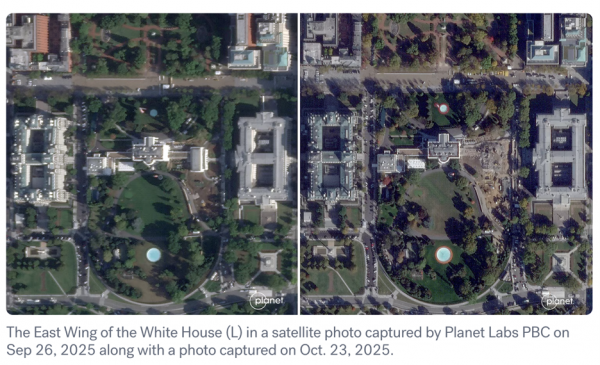
The East Wing emptiness is now a tourist attraction, a PTSD imprint that – with the rapid developments leading up to Thanksgiving – may inspire a turning point in Trump’s presidency.
On Tuesday, Nov. 18, after a 43-day government shutdown to avoid this moment, the House of Representatives voted 471-1 to compel the Justice Department to release all files on convicted child sex offender Jeffrey Epstein.

Meanwhile at the White House, Trump gleefully hosted Saudi Arabia’s crown prince Mohammed bin Salman (MBS) – who US intelligence believes approved the gruesome 2018 murder of Washington Post columnist Jamal Khashoggi. The president scolded ABC News journalist Mary Bruce for embarrassing “guest” MBS with “a horrible, insubordinate” question about Khashoggi’s murder. “Whether you like [Khashoggi] or didn’t like him, things happen.”
In Bob Woodward’s 2020 book, Rage, Trump reportedly bragged about shielding MBS: “I saved his ass,” getting Congress “to leave him alone.”
Meanwhile, after the House vote, Epstein survivors huddled at a news conference, holding up photos of themselves as teenagers and young women, asking if Trump is innocent, what is he hiding? Why won’t he release the files now? Suddenly, thrilled survivors learned that the Senate had unanimously passed the Epstein Files Transparency Act and sent it to Trump for his signature.
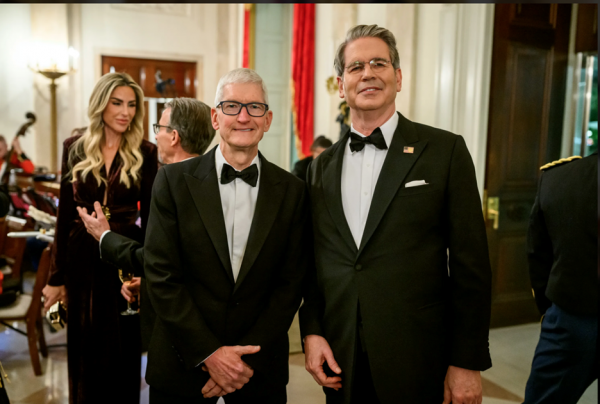
Cut to Trump hosting a black-tie dinner for MBS with lots of rich men who do business with the Saudis. The next morning, he announced that he had signed the Epstein bill, with a 30-day deadline.
“It was a remarkable turn of events for what was once a far-fetched effort,” AP reported. “Trump did a sharp U-turn on the files once it became clear that congressional action was inevitable.”
Trump needed a distraction.
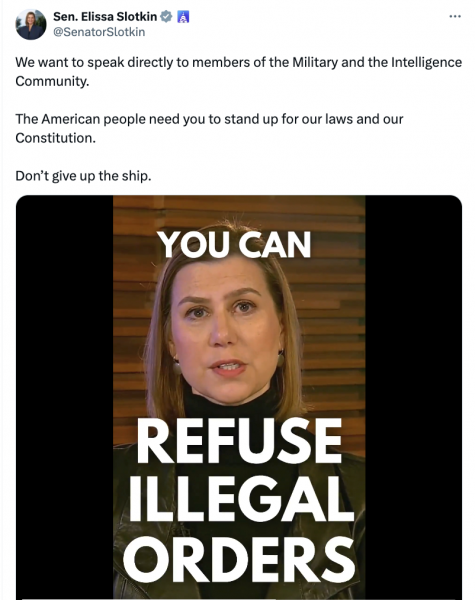
Early Tuesday morning, Nov. 18, Democratic Sen. Elissa Slotkin posted a 90-second video on her X account calling on U.S. servicemembers to not obey unlawful orders.
“The American people need you to stand up for our laws and our Constitution,” said Slotkin with five other fellow military veterans – Arizona Sen. Mark Kelly, and Reps. Jason Crow, Chris Deluzio, Maggie Goodlander, and Chrissy Houlahan. “Don’t give up the ship.”
The Uniform Code of Military Justice says troops who disobey a direct order will be punished. But servicemembers and officers also have an obligation to reject any order they deem is unlawful, a reference to the “I was only following orders” Nazi defense during the Nuremberg trials.
There is cause for concern. In his first term, Trump asked about shooting unarmed civilians protesting the murder of George Floyd. In his second term, Trump has threatened to use the Insurrection Act to deploy troops, “unleashed” police, federalized National Guard, and masked and violent ICE and Border Patrol agents in American cities.
“The president was enraged,” Trump’s 1st term Defense Secretary Mark T. Esper told NPR. “We reached that point in the conversation where he looked frankly at [Joint Chiefs of Staff] Gen. [Mark] Milley and said, ‘Can’t you just shoot them, just shoot them in the legs or something?’ … It was a suggestion and a formal question. And we were just all taken aback at that moment as this issue just hung very heavily in the air.”
Trump found his distraction on Thursday, Nov. 20, reposting a Washington Examiner story about the Democratic lawmakers’ video, adding that it was “really bad, and Dangerous to our Country. Their words cannot be allowed to stand. SEDITIOUS BEHAVIOR FROM TRAITORS!!! LOCK THEM UP???” In another post he said it was “SEDITIOUS BEHAVIOR, punishable by DEATH.”
Trump also reposted a @P78 comment: “HANG THEM GEORGE WASHINGTON WOULD !!” Bomb and death threats against the Democratic vets “surged”. Senate Democratic Leader Chuck Schumer said Trump was ‘lighting a match in a country soaked with political gasoline.’”
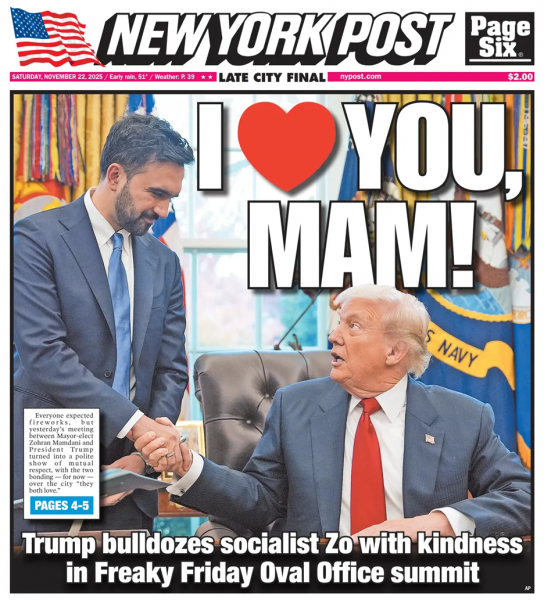
Cut to Friday. 34-year-old New York Mayor-elect Zohran Mamdani met with Trump, who had vilified the Democratic Socialist. But inexplicably, the meeting turned into an Oval Office lovefest, with an almost giddy Trump, 79, saying it was “OK” that Mamdani had called him a fascist. He promised to help the city.
That night, longtime Trump and MAGA loyalist Rep. Marjorie Taylor Greene announced she’s resigning from Congress, effective Jan. 5, 2026.
Greene criticized Trump over “America First” and health insurance policies but a major split occurred when she sided with Epstein survivors over him. Trump called her a “traitor” and vowed to back a primary challenger.
“Loyalty should be a two-way street,” Greene said in her 10-minute video. “I refuse to be a battered wife hoping it all goes away and gets better.”
No one knows what’s coming next.
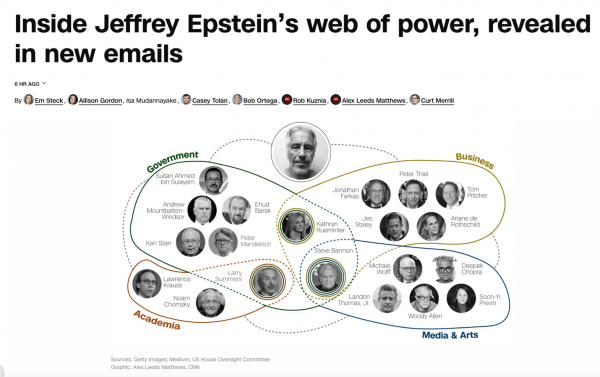
But for the LGBTQ+ community, there are other important split screens amid Project 2025 erasure – such as out California Rep. Robert Garcia’s key role as ranking member of the House Oversight Committee focused on transparency and justice for Epstein survivors.
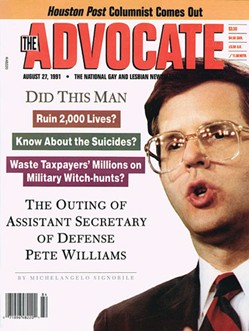
And while Trump was threatening Democratic lawmakers with death on Thursday, Pete Williams, a former NBC News correspondent and press secretary for Vice President Dick Cheney, spoke at Cheney’s funeral at the National Cathedral. Williams told the mostly old-fashioned Republicans how he offered to resign in 1991 when The Advocate was about to out him as gay. Cheney – who loved his semi-out lesbian daughter Mary – said no and checked on him after the story was published. During the horrific AIDS crisis in the early 1990s, ANGLE (Access Now for Lesbian and Gay Equality) fundraised and worked to elect pro-gay politicians. In 1991, longtime gay politico David Mixner introduced ANGLE to his friend, Arkansas Gov. Bill Clinton, whom the group helped elect as president.
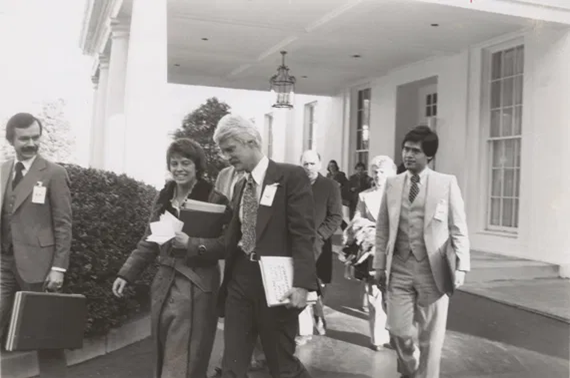
Gay people were not welcome at the White House until Clinton, other than one historic visit on March 26, 1977. Decades later, when ANGLE’s Jeremy Bernard was being interviewed by First Lady Michelle Obama for the job of Social Secretary, he recalled how difficult it was to get through the East Wing visitors’ entrance during Clinton’s administration.
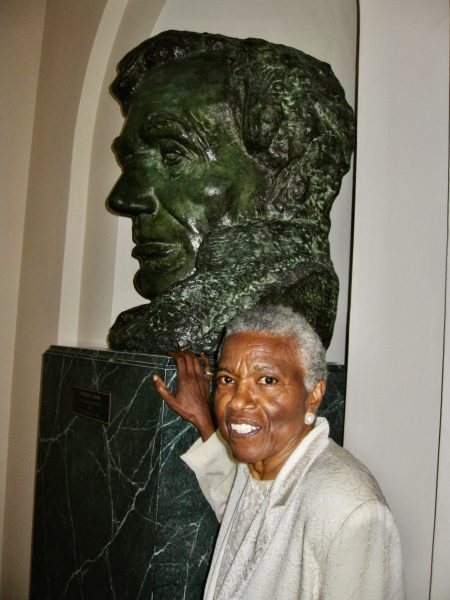
“I said to Mrs. Obama, ‘It takes a lot to get in these doors. And I think it’s very important for people to feel very welcomed,’” Jeremy says during a recent conversation.
The First Lady agreed and “wanted to make sure as many people that never had been to the White House and never thought they would be, got the experience to do it.”
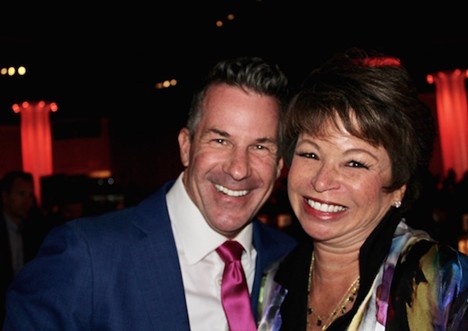
Jeremy worked for Obama’s presidential campaign in 2008, then as White House Liaison to the National Endowment for the Humanities before serving as Senior Advisor to the US Ambassador to France. On Feb. 25, 2011, he became the first male and first openly gay person to serve as Social Secretary.
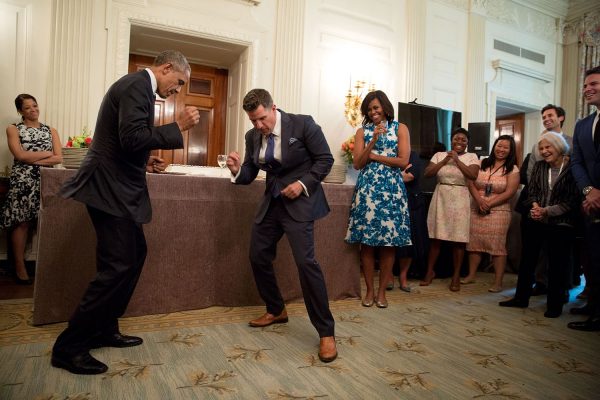
“Jeremy shares our vision for the White House as the People’s House, one that celebrates our history and culture in dynamic and inclusive ways. We look forward to Jeremy continuing to showcase America’s arts and culture to our nation and the world through the many events at the White House,” President Obama said in a press release.
“My office was in the East Wing, and I had what I thought was the best office. I looked over toward the South Lawn, but I also had the roof of the East Colonnade below me. I had a window that actually would open like a door, and you could walk out onto the roof as if it was a patio,” Jeremy recalls, noting that he was warned to call the Secret Service before going out to avoid getting shot.
“I was so shocked,” Jeremy says about the East Wing being demolished. “When I first heard there were bulldozers, I was like, well, what is it they’re knocking down from it?” – finding out later, “the whole thing” was gone.
He felt “some self-sorrow” and “numb” remembering his office. “It really is a part of history, not just for those of us that worked there, but for virtually everyone – whether you were there for a state dinner, a holiday party, or a reception for St. Patrick’s Day, LGBT celebration – whatever it was, everyone came through the East Wing.”
California Gov. Gavin Newsom said it well, Jeremy says. “Compared to what ICE is doing and all that, it may not rank up there, but it’s symbolic of what’s happened in our country.”
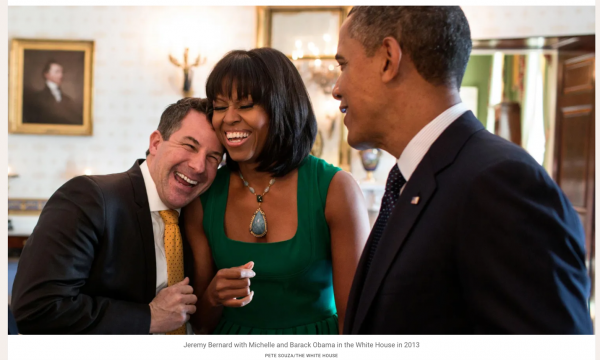
First Lady Michelle Obama said it well, too. “We always felt it was the people’s house,” she told CBS “The Late Show” host Stephen Colbert. “I am confused by what are our norms? What are our standards? What are our traditions? I just feel like, what is important to us as a nation anymore? Because I’m lost.”
And, Obama continued, “I hope that more Americans feel lost in a way that they want to be found again, because it’s up to us to find what we’re losing.”
“The West Wing was work — sometimes it was sadness, it was problems. It was the guts of the White House,” she said. “The East Wing was where you felt light.”
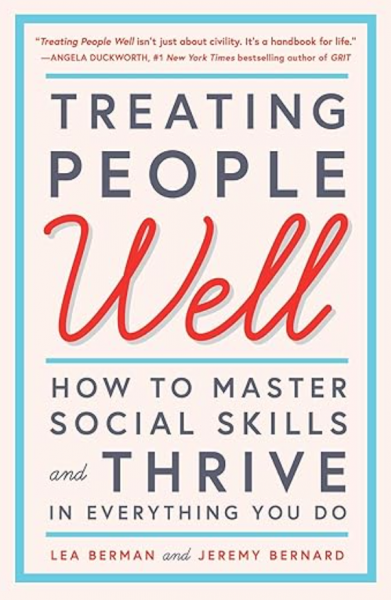
Jeremy and Lea Berman, Social Secretary in the George W. Bush White House, have some suggestions in their book “Treating People Well,” subtitled “How to Master Social Skills and Thrive in Everything You Do.”
“It was important to us to see that despite our differences in how we viewed policy, Lea and I and Lea’s husband – who is an operative in the Republican Party – were very close,” Jeremy says.
“I think about what this must be like for kids,” Jeremy says. “We always looked at these presidents as a certain type of person.”
But now people hear Trump say, “’I hate my enemies. I want revenge.’ What is that teaching kids?” Jeremy asks. “The President of the United States is saying that. I think it’s really frightening. We can’t let that stand.
“I think we’ve got to go back to the way we were brought up about how you treat other people,” Jeremy says. “It’s really important that we focus on the more positive characteristics of human beings…. Most communities are very different and we celebrate that. But you can only celebrate it with civility.”
Karen Ocamb is a veteran LGBTQ+ journalist and former news editor for the Los Angeles Blade. This article was originally posted on her Substack LGBTQ+ Freedom Fighters. Her extended conversation with Jeremy Bernard – who talks more about the East Wing, ANGLE and the Obamas – is embedded in the post.
Features
A blazing champion: Los Angeles LGBT Center’s Terra Russell-Slavin is leading this generation of queer activism
Russell-Slavin grew up advocating for domestic violence survivors as a teen in Texas. Today, they continue to empower the LGBTQ+ lens in their social justice work.

At 16, Terra Russell-Slavin began doing volunteer work around domestic violence when they met someone whose silhouette still lingers in their memory. It was a woman whose abusive husband was held in high esteem in their Texan town, and this sense of helplessness they felt — and the helplessness they imagined this woman was experiencing — continues to impact them. “It was a reminder of how we don’t know what’s happening behind closed doors,” Russell-Slavin told the Blade. “That has always stuck with me.”
Throughout college and eventually law school, they became a fierce advocate regarding domestic violence and campus-related sexual violence. Having grown up with that searing vision and with the politics of their hometown, they were aware of the importance of reproductive freedom and gender-based violence from an early age. “I think just growing up in Texas, there was such an assault on bodily autonomy,” said Russell-Slavin, detailing a pervasive cycle of harm that also intersected with racism and anti-LGBTQ+ beliefs.
Today, Russell-Slavin serves as the Los Angeles LGBT Center’s chief strategy officer, developing models for action and plans of response against federal attacks on LGBTQ+ rights. Even as a young college student, they honed in on the power of their voice and their ability to fight back. At Pitzer College, they worked to rewrite the campus’s sexual assault policy. At law school, they stood in defiance to the threat of military presence at school and stood up proudly as an LGBTQ+ person for the first time.
Over the years, they’ve fought for the safety of domestic violence survivors, namely victims of LGBTQ+ partner violence. In 2013, they were a leading voice in securing federal non-discrimination provisions based on sexual orientation and gender identity. They’ve written extensively about the intersections of domestic violence and queerness, and continue to advocate for resources and protections for LGBTQ+ community members.
Earlier this month, Russell-Slavin was awarded the Triumph Award from the California Partnership to End Domestic Violence, honoring their work in building a “blueprint” of advocacy for LGBTQ+ survivors of domestic violence. The Blade sat down with Russell-Slavin to discuss the metamorphosis of their advocacy through the years, and how this is shaping a hard but hopeful path forward in the fight for LGBTQ+ rights.
Can you tell me more about how your advocacy took shape during college and law school? How did this all intertwine with your own coming out journey?
Law school was the first time I really was able to be my full self and embrace myself as a queer person. It made my life so much richer and full, and I think I was able to become such a better advocate.
In college, I had done all this work around campus sexual violence, and that had led to the rewriting of the sexual assault policy. But I kind of came out towards the end of that, and it was hard. College was hard. I was kind of constantly challenging the systems. And I think by the time I got to law school, I felt more affirmed in my identity, and just more clear on my purpose.
Once I came out, it was like, “Oh, of course.” People just assumed I’d been out for like a decade [when] really I came out the year before.
I remember actually standing up in a governance meeting of faculty, staff, and students at the law school, and it was about the Solomon Amendment. It was back in 2002 when the U.S., under the Bush administration, was requiring schools to allow the military to recruit on campus. It’s actually very symbiotic with what is going on right now.
Law schools folded, and so we were having this meeting. I got up to talk about it, and it was this moment of being like: Oh my god. I just got in front of all these people self-identifying as queer. [It was also the] moment where my advocacy shifted from not just gender-based violence work, but also the intersection with LGBTQ advocacy. I started really integrating the LGBTQ lens into my broader social justice work.
Was speaking up and self-identifying as queer at that meeting a moment of fear? Were you overwhelmed? What were you feeling?
I remember being really nervous and just afterwards, being like: “Did I just do that?” Because it wasn’t necessarily pre-planned, but more responding to that conversation and the moment and the sense of urgency, and needing the people who were to understand the sense of urgency. Afterwards, it was a little bit freeing, because once I’d had that, there was no going back in. It reaffirmed [and] re-solidified my social justice legal track and fighting for our rights. It helped propel that path.
To bounce back a bit, can you tell me more about what rewriting your college’s sexual assault policy was like?
It was really hard. I was fighting the administration, and I was also on the student governance committee. As part of that, I really led an effort to rewrite the policy at an early age. We weren’t the first. But [it was about] this active consent model and that silence is not consent. I was having so many people come to me on a very progressive, privileged college campus to tell me about a sexual assault that had happened on campus, and their [own] sexual assault. I was that person that people came to.
There were some pretty big incidents on the campus, and there was a lot of contention. There were lots of student body, school administrator meetings, and I was one of the main leaders who [were] spearheading the change. There were [also] a lot of students on campus who weren’t happy with the change. It was a really hard time. It was one where I got to grow a lot, and I’m deeply appreciative of having that opportunity.
[In] 2013, I got very involved in federal policy around the Violence Against Women Act. I got invited to the White House for the “Not Alone” report, which was about campus sexual violence. It was so full circle to be at the White House a decade after rewriting our policy, which, at the time, they were still using. I was proud of the fact that we were ahead of the curve for the change. [It’s also] cyclical: so many of the things that we were hearing in the news at that time were things we dealt with 15 years earlier.
Where are you currently in terms of your work, your activism and your advocacy? What are the projects that you’re really passionate about these days?
2025 has been a hard year. We lost our house in the fire in Altadena, and I came directly from that into an executive leadership role in the Center. I was out on sabbatical when that happened. When I came back in early February, my main job [was] protecting our organization against federal threats. We’re the largest LGBTQ organization in the country, and it has been an onslaught of federal attacks. So it has been very intense. That’s where I’ve been spending a lot of my time, is [questioning]: how do we respond to federal threats? How do we mobilize locally and at the state level to fill the gaps caused by these federal attacks? How do we stand in coalition as a progressive movement to not lose the country we fought to create?
How are you managing with dealing with the various crises that are happening federally and also having to personally rebuild and take care of yourself and your family in the aftermath of the fire and losing your home?
I will say I’m very fortunate, and that I have an amazing wife who has really held down so much of the rebuilding of our life. There is [also] something about this moment that I think, if you have been embedded in activism, feels like a moment we train for. I think I had early on, a realization that other people weren’t going to be coming in to save us, and that we were those people. So I think that has really created a sense of both responsibility [and[ an understanding that this isn’t a one month fight, but a longterm kind of ground game.
With this long fight ahead, what is the best way for people to join and mobilize together with the Center and with the work that you’re doing?
One aspect of my portfolio is overseeing our policy and community mobilization teams, and we have an amazing mobilization effort. We ask people to join our policy newsletter, and we’ve rallied people to do phone banks to save Medicaid. We’ve rallied people to show up at CHLA and fight the closure of transgender affirming clinics for adolescents.
We had more than 150,000 emails sent to state legislators to support [our] pro-trans advocacy package. So, I think that is the way we are really hoping people will engage, and we really want more people to engage leading up to 2026. Because this next election is going to be incredibly important to ensure that LGBTQ voices are visible, are seen, are heard and responded to.
You’ve taken on so many different roles within the Center. Through those shifts and transformations, have you seen a personal impact in terms of your approach towards activism and advocacy? How is that shaping where you’re heading in the years ahead?
I started my career working with hundreds of LGBTQ survivors. To this day, [that] informs my work. And I work closely with the teams that still do that work directly. I also am one of those people who always gets calls from the community, and I’m like: “Here’s how you’re connected to services. I got you.”
It’s interesting because I think I’ve gone from doing very direct work to doing policy work to kind of doing everything. And I think I’ve actually been able to come back and think more clearly about where I am best used. Because we need all of us in the fight. And we need to maximize people. I needed to really hone in on what [it is] that I can contribute. Right now, for me, it is bigger picture strategy, policy, advocacy response, and helping us fight back in this moment of real, intense vitriol.
Kristie Song is a California Local News Fellow placed with the Los Angeles Blade. The California Local News Fellowship is a state-funded initiative to support and strengthen local news reporting. Learn more about it at fellowships.journalism.berkeley.edu/cafellows.
Features
Baring it all: Andrew Christian signs off the only way he knows how… in style
Andrew Christian, the underwear visionary who made boldness sexy and visibility stylish, is closing his legendary brand—but his creativity is just getting started
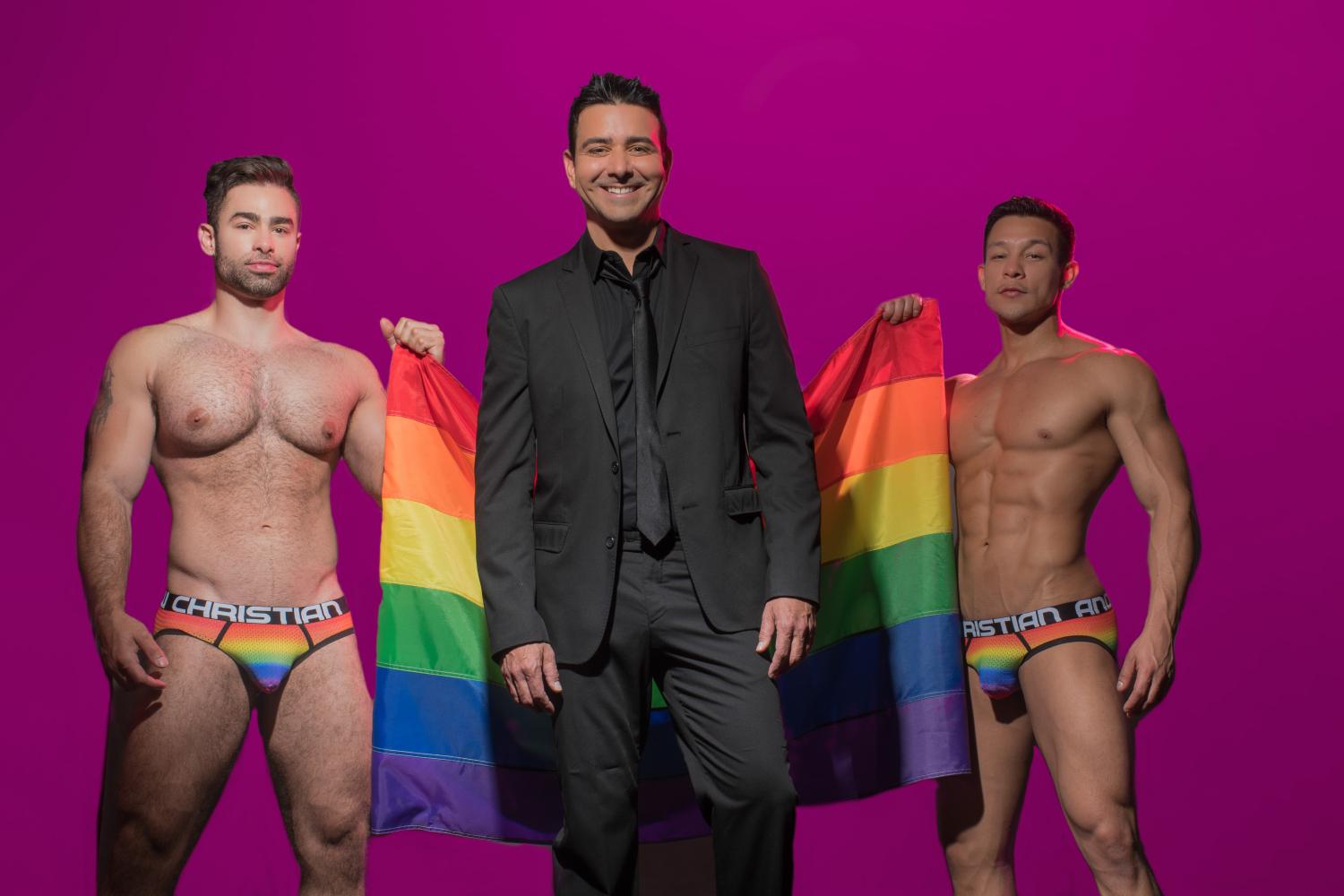
Andrew Christian – the man, the myth, the underwear legend. Over the past 25 years, Christian’s made briefs tighter, bodies tauter , and gay visibility a little more… stimulating. From a little ol’ garage in Los Angeles to an international brand that rewrote the definition of sexy, Christian’s man-panties weren’t just gay lingerie but a full-blown statement on what it means to be young, hot, and gay. And now, after more than two decades of shaking up drawers from sea to shining sea, he’s ready to close up shop on his eponymous line. Let’s talk about why, and what comes next for a designer who’s never been afraid to bare it all, literally and literally.
After more than 25 years in business, you recently made the unexpected announcement that you will be closing the Andrew Christian brand. Can you share with us what ultimately brought you to this weighty decision?
After more than two decades, I realized I had told the story I needed to tell through fashion. The brand was born from my own struggles and identity — it was my way of finding power and visibility as a gay man when the world didn’t always make space for that. But as I grew, so did my perspective. I felt it was time to close this chapter with intention and gratitude, rather than wait for the fire to fade. Creativity doesn’t retire — it just finds new ways to express itself.
Looking back to your early days in Fresno and then moving to Los Angeles, what was your initial inspiration to create an underwear line?
Honestly, it came from necessity and curiosity. I was broke, living in a converted garage in L.A., and I wanted to make clothes that made me feel confident — things I couldn’t find anywhere else. Underwear became this powerful little canvas for self-expression. It was about turning something hidden into a statement.
How did being a young gay designer at that time influence and impact your vision and voice as a creator?
It shaped everything. Being gay in the late ’90s and early 2000s meant fighting to be seen — so I made visibility my mission. My designs were unapologetic, bold, and playful because that’s what I wanted to feel in my own skin. I wanted every gay man who wore my underwear to feel seen, sexy, and celebrated.
What were some of the biggest hurdles you had to jump while building a gay-geared brand in an industry that usually takes the more mainstream route?
The biggest challenge was being taken seriously. Early on, major stores wouldn’t carry a gay brand, especially one with such provocative imagery. But that also gave me freedom — I didn’t have to play by their rules. I could speak directly to my community, which was way more rewarding than trying to fit into the mainstream mold.
Producing ethically can be tough in an industry that often rewards cutting corners. How did you stay true to your values around fair production and quality while growing the Andrew Christian brand?
I’ve always believed that every garment carries meaning. Cutting corners was never an option. We prioritized fair production, quality materials, and ethical labor practices—even when it was harder or more expensive. Beyond that, I wanted every piece to have an amazing fit, so I spent countless hours making sure each garment fit as perfectly as possible. Every piece had to honor both the wearer and the people who made it.
Looking back, do you have a favorite collection or specific piece that, to this day, feels like the essence of Andrew Christian?
I’d have to say my final collection, Bespoke. It’s deeply personal — inspired by the clothes I actually wear. They’re timeless, classic pieces with subtle details that make them special. Bespoke feels like my love letter to everyone who’s supported me — one last chance to wrap them in the love they’ve given me all these years.
What advice would you give to a young gay designer who wants to build something authentic yet sustainable in today’s oh-so-very competitive world?
Start with truth. Don’t chase trends or algorithms — chase what you need to say. Authenticity will outlast everything else. And be patient — the fashion world moves fast, but real creativity takes time. Protect your vision, and never forget who you’re creating for.
How have social media and influencer culture affected fashion brands?
It’s been a double-edged sword. Social media gave independent brands like mine a voice when traditional media ignored us. But it also created a culture of constant comparison and short attention spans. The trick is to use it as a tool, not a measure of worth.
Your imagery helped define a generation’s idea of what “sexy” looked like in gay culture. Do you ever think about how the Andrew Christian aesthetic influenced and impacted perceptions of desirability in the queer community?
All the time. It’s something I take seriously. My imagery was meant to celebrate confidence, not conformity — to say, “This is who we are, and we’re proud of it.” Over the years, I’ve seen how beauty standards have evolved, and I hope my work played some part in opening that conversation.
When people look back at the Andrew Christian brand, what do you hope they remember most?
That it made them feel something — seen, sexy, confident, part of something bigger. I want people to remember the joy, the audacity, and the freedom of expression the brand represented.
What’s next for you personally and creatively after closing this chapter? Are there any new projects you are interested in exploring?
I’m giving myself the space to breathe and explore without a deadline attached. I’m drawn to storytelling — maybe film, maybe writing — and I want to keep creating in ways that feel personal and meaningful. I don’t know exactly what it will look like yet, but I’m excited to find out.
What do you think the future of queer fashion looks like in the next… let’s say 5 to 10 years?
Honestly, I’m a little concerned. I don’t think queer fashion will thrive the way it once did. Just like gay bars are slowly fading out, I see our visibility retreating in some ways. The decade of the “gay” is over, and unfortunately, our community seems to be retreating back into the closet, so to speak. That doesn’t mean the spirit of queer expression will disappear—but the platforms and spaces where it once thrived are definitely shrinking.
I’d like to close with the most important question of all — what underwear are you wearing right now?
(Laughs) Bespoke, of course. Gotta go out in style.
Features
From the GOP to West Hollywood: How one young political advocate found his voice
Joshua Marin-Mora champions LGBTQ+ rights. For years, he worked in spaces that shunned them.
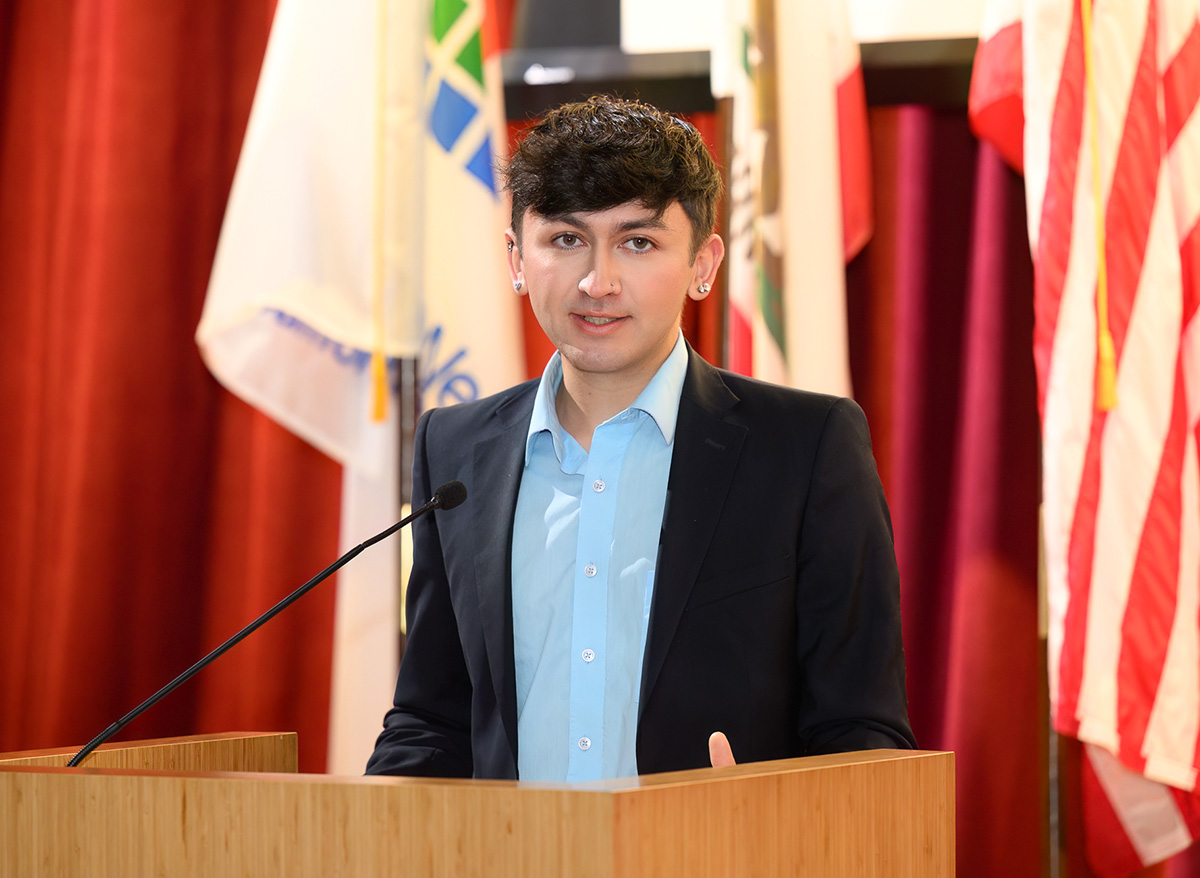
El Que dirán. What would they say?
These words emanated through Joshua Marin-Mora’s mind as a child, serving as a backdrop for a personal shame that would steep in his body and mind for years. At 14, he was the golden child: he soared academically. He shone on stage in theatre productions. He attended church with his parents, who had instilled in him a deep sense of faith.
Internally, he was struggling. He had discovered at this point that he was attracted to men. “I didn’t really know what that meant, but I knew it was bad…It was crushing. I found myself in an extremely dark and scary place. Honestly, I did not know if I would make it out of it,” Marin-Mora told the Blade.
Bright and eager, he felt his successes shadowed by this self-knowledge: this part of himself he couldn’t share with anyone else. “The Church tells me I’m supposed to marry a woman and have children. My family wants grandkids,” said Marin-Mora. “It was an inconvenience for me. It was an inconvenience for the people around me. I wanted it gone…I really thought that I could be over with it, and I really thought that God would take it away. I prayed about this.”
At 15, he discovered a new sense of purpose: one that allowed him to throw himself into public service that felt meaningful and nourishing — and one that allowed him to continue to hide his queer identity. He attended his first city council meeting in Reno, his childhood home, and witnessed for the first time conversations between residents and local legislators. He experienced people bringing their grievances to the table and saw the ways that city council members tried to form solutions.
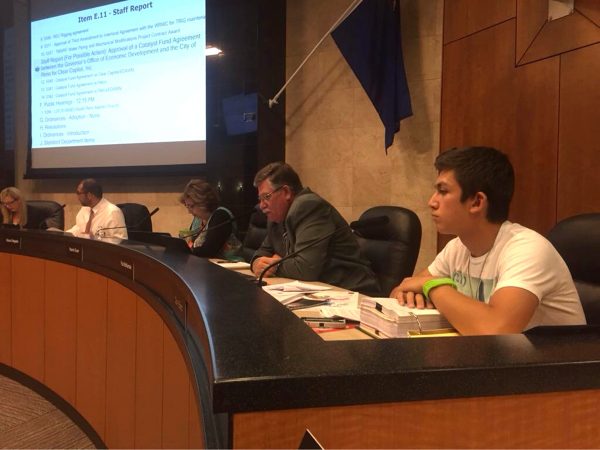
Soon after, he was elected to the youth city council, where he actively took part in community events like food, clothing, and supply drives while learning the ins and outs of local government. “I was on cloud nine,” Marin-Mora said. He actively served in the council throughout high school, and by the time it came for college, a path presented itself: one that would have him wading deeply into conservative political spaces for years to come.
“I’d basically been put into the GOP lane…it made sense for me at the time. I didn’t want people thinking I was gay. ‘Let me go for the anti-gay party’,” Marin-Mora explained. “The loud parts of conservatism in the Catholic Church seemed to fit just right with what that political party was doing.”
While studying international politics at Georgetown University, he continued to develop a deep love for politics and figuring out how “the system” worked. In his junior year, the COVID-19 pandemic began, and, like many other LGBTQ+ folks during the following period of isolation, he was beginning to engage more with queer media as he contended with the shame he had grown to hold around being gay.
In this conversation with the Blade, Marin-Mora discussed the breaking point that led to his coming out, the viral online backlash he faced for being out in politics, and his journey of queer self-acceptance and transformation that led him to sell all his things, move to California, and abandon his previous work to fight for queer liberty.
When was the first time you opened up to someone about being gay, and what led up to that moment?
It was the second half of my junior year [in college]. I go home, and I’m watching the show Love, Victor. The lead was a gay Latino kid who had to navigate what it meant to be that. I still haven’t ever related so much to a story on television. I saw me, and the floodgates just broke open. My whole life flashed before my eyes because I actually gave myself permission to even entertain the idea, which was radical at the time for me.
I thought about the priest who discouraged me from going to Pride. I thought about El Que dirán. What would the family say? I [had] been doing all this professional work for the GOP. Could this derail that? But at the end of it, I was just so touched. I went to my best friends. We went to the National Mall. And I remember thinking, “Look, you have to buckle up.” Because the way I saw it: once you say it, there is no going back.
I never felt such a weight off my shoulders, and I underestimated how ready I actually was to do this. Within the next couple of days, I’m getting my ears pierced. I’m dyeing my hair. I was on top of the world, and nothing else mattered to me. I had my support system. They cared [for] and loved me — my chosen family. And that was what mattered. You know what I believed? Maybe this could work. Maybe I can carve out a place for me…But life got real, and then there came the point when it was time to wake up.
What do you mean by that?
I worked on a very high-profile campaign [for Virginia governor Glenn Youngkin] right out of college. And while I was on the campaign, I went to my first Pride. It was so amazing. I went with my support system. But I was at a campaign stop in rural Virginia, and my phone blew up.
I had posted a photo of myself at Pride in a skirt. It felt like the right thing for me to do at the time. I loved it. I have no regrets, but there were a lot of people who didn’t like that. It became this entire thing. I was reading the nastiest comments online. My photo is getting blasted everywhere, and my blood went cold because I was afraid. I don’t know how big this was going to get. And this is a high-profile campaign — this was one of two special elections in the entire country that the whole nation is watching.
After the shock had settled down, I remember feeling angry. I was mad at myself, and I was mad because I wasn’t surprised. By this point, the GOP had already started this ugly culture war that had taken place that was gaining traction around the country. They were smearing trans people. They were enacting policies to out LGBTQ+ students. They were cracking down on schools and banning books. I’m ashamed to admit that I looked away and that it took me getting burned to realize sort of the extent of truly what was happening. I had to grapple with myself.
I thought there could still be a place [for me]. Now I’m wondering: Is politics even for me? Can I even handle this anymore? I moved to Colorado…I couldn’t even imagine starting from zero, every connection I’d made, all the experiences that I gained, to just start over. It was nerve-wracking. So I worked on moderate campaigns, and I ended up finding that the culture war wasn’t going away. Mass shootings were still happening. This is 2022, by the way. Roe v. Wade was overturned. Only Democrats were talking about health care reform and actually doing something about it.
My role was to listen to the other side on these campaigns, and…I realized that my views, my values — they were just pulling me in a whole different direction. So now I’m experiencing an identity crisis, the voice that I thought I had found…I didn’t know where that was anymore.
In 2023, I’m living in Denver, and by a miracle, I worked for my first Democratic campaign. It didn’t last long, but it felt better. It felt right. But by that point in my life…I really didn’t think that I’d done enough. I [kept] looking at everything happening nationwide. I’m not the kid getting outed. I’m not the trans person whose dignity is being stripped away. It’s all ramping up even further, and I had played some role in all. I felt terrible. I felt awful. I didn’t know who I was. And so I realized, I couldn’t stay in Colorado. I was desperate for a fresh start.
So [in the] summer [of] 2023, I sold what I could. I had no job lined up because the other campaign had just ended, and I came and I moved to LA.
How did you make it work?
I was directing traffic at SoFi stadium. I was helping out with check-in and giving out bobble heads at Dodger Stadium. I was like, I’m gonna make it work. This is the dream. Then, a couple of months later, I saw that my assemblymember was hiring, and Rick Chavez Zbur literally gave me the shot of a lifetime, and it changed everything.
How has this experience working with Assemblymember Zbur been pivotal for you?
Being gay had been the source of so much pain for me up until this point, and I was able to flip that whole thing on its head…Growing up, I was very cognizant of the tightrope that I was on. I knew in my truest, deepest self, that if I veered too much off the tightrope, I had to do everything to correct.
I am [now] working for a gay elected official who is unabashedly a champion for progressive points. I am working out of one of the gay meccas in the world, West Hollywood. I didn’t feel like I was on that tightrope anymore. I had actually found my voice. In addition to that, going to this idea of penance, now I get to be on the front lines and fight for all those people that had been further marginalized.
I was thinking about this little kid in me that had it really hard. [He’s] a community leader who had been on the front lines. He lived through the AIDS crisis. He led Equality California. He saw that I was trying to come home. He gave me that chance, and I will always be grateful for that.
I go home, I go to sleep at night proud of what I’d done that day. I’m back in the community, just like I’d always wanted to be. I’m helping people. I’m trying to make their lives even a little bit better, just like that lifeline that has really driven me throughout my entire life.
Can you tell me more about your belief in the political system? How do you empower yourself and others to keep going, especially when faith in that system can be really difficult for queer people and other marginalized communities?
Decisions are being made every day that will impact our livelihoods and will impact our futures. And if we don’t get involved, if we don’t fight — if you’re not at the table, you’re on the menu. I personally feel like there is so much at stake that it takes all of us. We’re all on the same ship, one way or another, and that’s why I believe in the system.
Losing faith in the system is exactly what they want. They don’t want us involved. They don’t want us making noise. They want to run the whole thing. When you realize that, when you wake up to that, when you think about your neighbors, when you think about your communities, I’ve experienced how easy it is to look away or not care until you’re at the end of the brunt. It changes your whole worldview.
No system is perfect. I remember that city council meeting that I went to: all those neighbors who were coming up to speak and ask for change. They were the ones the decision makers were listening to. And if the decision makers aren’t making the right changes, then you try to become the decision maker. It’s very easy to get overwhelmed and over consumed, but I think about the bigger picture. What can I do? What part can I play?
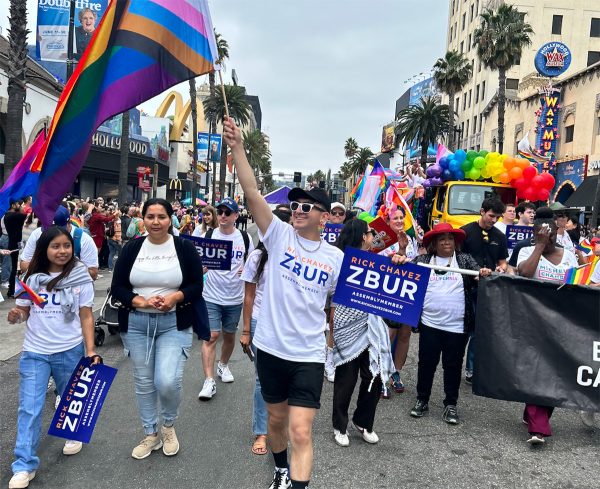
Follow Joshua on IG: @Joshua_MarinMora
Features
Nancy Pelosi: an LGBTQ+ appreciation of the retiring House Speaker Emeritus
Pelosi on her Catholic faith and the impact of AIDS
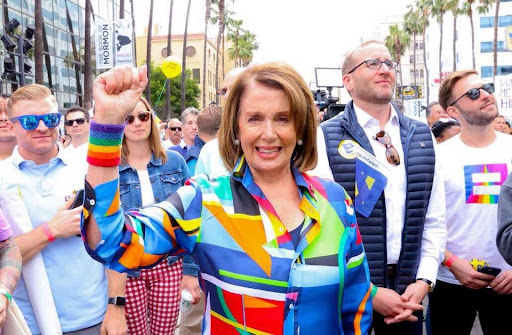
It was not unexpected. House Speaker Emeritus Nancy Pelosi, 85, is retiring after serving 39 years in Congress. Her announcement video, released Thursday, is an ode to her beloved San Francisco, brimming with images of people, landmarks, and the proud liberal story that quickened her heart and stiffened her spine as she fought for progress in making America a more perfect union.
“My message to the city I love is this: San Francisco, know your power,” Pelosi said. “We have always led the way, and now we must continue to do so by remaining full participants in our democracy and fighting for the American ideals we hold dear.”
Pelosi’s legacy as the country’s powerful first and, so far, only female House speaker – serving twice in that role, 2007-2011 and 2019-2023 — is replete with examples of how she smartly and bravely stood up to bullies, including Republican President Donald Trump and his violence-prone cult followers who demonize her, and sought her out during the Jan. 6, 2021 insurrection at the Capitol as she led the certification of Joe Biden as President. Roughly three years later, her husband Paul was seriously attacked in their San Francisco home by an intruder intent on kidnapping her.
As House Speaker, Pelosi presided over Trump’s two impeachment votes in his first term. And while she might not reach those heights again while she serves until January 2027, she was a visible force in passing California’s Proposition 50, working behind the scenes, helping Gov. Gavin Newsom raise money and construct the state’s reapportionment initiative in response to Trump’s attempts to rig the 2026 midterms.
Prop 50 – the only thing on the ballot in this special election – won handily with almost 64% of the vote to 36% percent. Los Angeles County voted “Yes” 73% to 27%.
“Some people go off and they talk about the way the world should be, but they don’t do anything to damn manifest it,” Newsom said on election night, per the New York Times. “Nancy Pelosi doesn’t go out to try to make points. She makes a difference.”
Two of her most memorable achievements as Speaker were her deft political strategy, vote counting and arm-twisting to pass extremely difficult legislation such as the new Obama administration’s American Recovery and Reinvestment Act after President George W. Bush’s “too big to fail” Great Recession and the Affordable Care Act (Obamacare) – after which she proclaimed that “being a woman is no longer a pre-existing condition.”
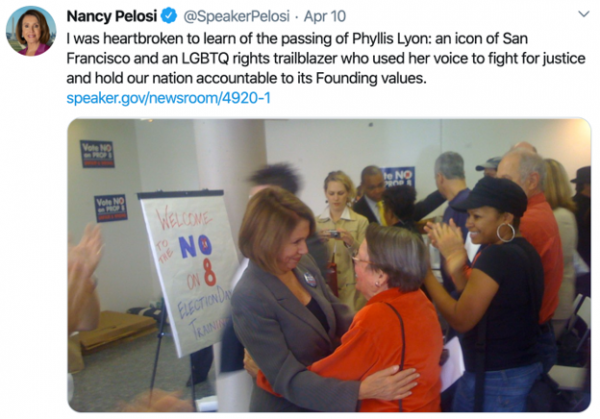
During her decades in Congress and before, Pelosi has been a towering hero. “She’s just always been there,” longtime AIDS and gay activist Cleve Jones, who at first didn’t take her seriously, told the New York Times. “She’s more than an ally. She’s family.”
In May 2018, I interviewed Nancy Pelosi, then the House Minority Leader, in advance of the important midterm elections – the success of which resulted in her historic election as Speaker for a second time.
With Trump and Project 2025 erasing our rights and our history with their version of Christianity and with the new AIDS Monument opening on Nov. 16 in West Hollywood, I think Nancy Pelosi illustrates how one can be religious, progressive, and decent, such as her expression of gratitude to President Bush for his PepFAR AIDS program.
Nancy Pelosi: The famous Leader you may not know (Excerpts)
House Minority Leader Nancy Pelosi is the embodiment of the feminist adage “the personal is political.” She celebrated part of her 78th birthday at an LGBT equality weekend in Palm Springs, which she declared a “fabulous” fundraiser for the Democratic effort to “take away” the House from the Republicans in the November midterm elections.
Pelosi is so confident of victory, she told the Los Angeles Blade that out Rep. Mark Takano will be the next chair of the House Veterans Affairs Committee come Jan. 2019.
“‘We will win. I will run for speaker. I feel confident about it. And my members do, too,” the Boston Globe reported May 1 on Pelosi’s meeting with the Globe’s editorial staff. “It’s important that it not be five white guys at the table, no offense,” referring to Trump’s meeting with the top two leaders from the House and Senate. “I have no intention of walking away from that table.”…
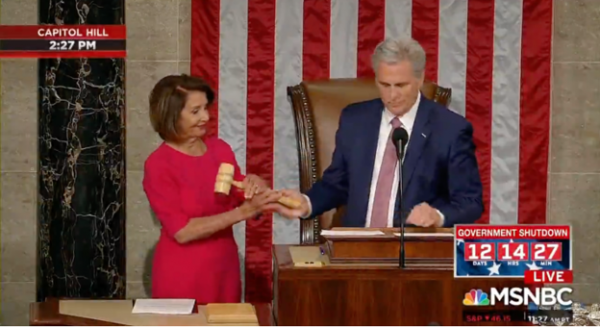
Many of the darts thrown at Pelosi over the years have been acid-tipped with LGBT-hatred. “One of the things the Republicans like to do around the country is to represent me as a LGBTQ-first-and-foremost supporter. I represent San Francisco, which they caricaturize as being a gay haven and capitol. And that’s something we’re very proud of,” Pelosi [said]. “But the fact is, the country is going to leave them behind because people have a different level of respect because of the work the LGBTQ community has done in many areas to end discrimination and in the fight against HIV/AIDS.”
Pelosi says HIV/AIDS and passage of the Equality Act are top priorities. “The Equality Act is something that really should be appreciated in a very special way because it really is transformative,” Pelosi says. “It just changes everything. It says whether it’s credit or housing or job discrimination, or you name it—you can no longer discriminate. Well, you shouldn’t discriminate to begin with. But it makes it a part of the Civil Rights Act to protect [LGBT] people.”…
To be sure, enshrining discrimination into law seems to be a subtextual plan of the Trump/Pence administration, with more information leaking out about Pence’s behind-the-scenes machinations involving the ban on transgender service members serving openly in the military….
Pelosi’s focus is on winning the House. “We are going to be focusing on the economy in our debate,” she says….“What we have to do is focus on the economic insecurity of American families and people. It’s about their apprehensions and their aspirations. And that’s what we need to be talking about….”
Pelosi also shares the concern of Rep. Adam Schiff, her appointee to the House Intelligence Committee, about the “dismantling of our democratic institutions that President Trump is so set upon, whether it is dismantling and discrediting the press, which I think is the greatest guardian of our freedom—freedom of press, dismantling of our Justice Department and law enforcement, in terms of the FBI, ignoring the system of checks and balances that exists in our Constitution, which is the strength of our country.”…
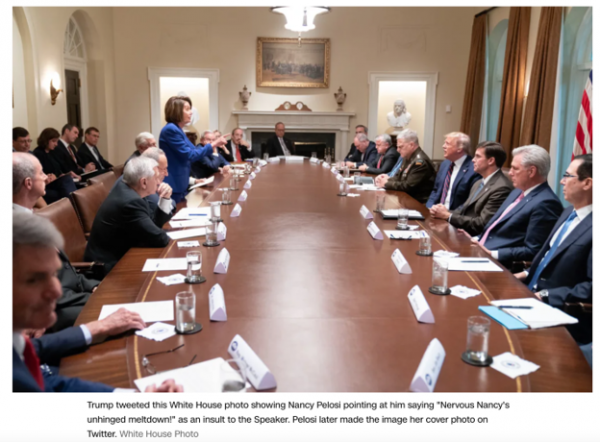
“The president is anti-governance. He doesn’t really believe in the role of government in improving people’s situations,” Pelosi says. “So it’s a comprehensive approach to dismantling democratic institutions….One of the reasons people should be very concerned is because the president is doing nothing to protect our electoral system, our democracy.”…

While young people at the #ResistMarch in West Hollywood last year were stirred up by Leader Pelosi’s rhetoric, it was clear they knew she was important—but not really who she was and why she was so passionate about LGBT equality.
Some of it is centered in Pelosi’s Catholicism, which is not the set of beliefs the Catholic Church espoused during Prop 8 and other political-religious battles.
“As a Catholic, I was raised to respect every person. We’re all God’s children. In my family, there was never any question about that,” she says. “In Baltimore, we did have a growing LGBT community—we didn’t call it that then, but it was part of our lives, and it was not any question that we would be any more respectful of one person than another. It wasn’t even an issue with me, and I didn’t ever even describe it or associate it with Catholicism because Catholicism taught me something different. It didn’t teach me discrimination. It taught me respect. And so it prepared me very well, my Catholicism, for being a representative in San Francisco.”
During the 1980s, with the unchecked rise of AIDS, the Vatican came under intense criticism for sticking to its absolute prohibition against using condoms, coupled with Pope John Paul calling homosexuality “intrinsically evil.”
Pelosi seems momentarily speechless. “I think the Church’s position that people could not use condoms—it’s so hypocritical, I can’t even go to that place,” she says. “The Church may make a proclamation, but they make a proclamation that people should not be using any contraception or birth control at all—it’s all about having a child. So while people are faithful to their religion, they are certain practicing what they need for the size and timing of their family, according to meeting their responsibility to the free will that God has given all of us.”
Ironically, because San Francisco “took a very big bite of that wormy apple called AIDS,” the Church “was more sympathetic to people when they had HIV/AIDS because they needed help then they were to people who weren’t infected. It was the strangest, strangest thing,” Pelosi says.
“It’s a funny thing. The Catholics—and I’m surrounded by Catholics—but the Catholics that I grew up with and I lived with in California were always respectful of the Church, of the Pope, of our faith, and never thought it was in any way a barrier to us doing what we believed. And sometimes that was diametrically opposed to what their public statements were.”
Not that she thinks the Church is immune to criticism. “There’s no question the Catholic Church in California was a participant in Prop 8 in a negative way,” Pelosi says. “We were on the other side of that. But to me, it was their problem. It wasn’t anything that was any moral imperative to me for me to follow the Church in enshrining discrimination in the law in California.”
Pelosi also does not concur with churches that pontificate about the “non-negotiable” – being gay, marriage equality, euthanasia, birth control, all generally lumped together. The commonality is the certainty that “all interactions between people are about producing a child. Then you cannot have birth control, family planning, or any of that, and you cannot have homosexual relations,” she says.
“I view that as kind of their problem. It’s not the reality of life, and it’s not about respecting the dignity and worth of every person.”
But, Pelosi adds, “I’m not making any judgments about how each of us honors our free will and our sense of responsibility that goes with it.”
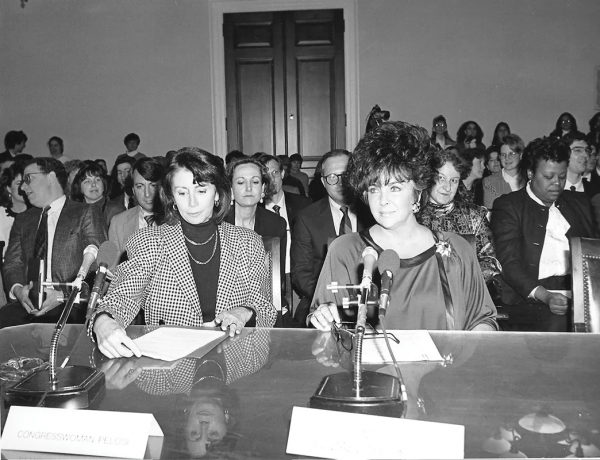
Pelosi is also guided by a moral imperative that young people may not understand today—the deep, personal impact of AIDS.
“Some people criticized me for talking about AIDS on my first day in Congress and I realized that it was not just about getting funding for AIDS research and prevention and care but it was about ending discrimination against people with HIV and AIDS,” adding that California has been a “tremendous resource” throughout the years for intellectual, political and economic response to the disease.
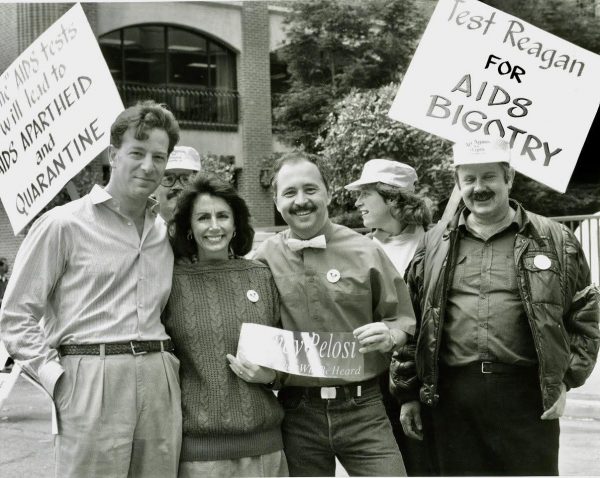
Pelosi responds viscerally when asked about losing friends.
“Oh, my gosh. Oh, my gosh. A little flower girl in my wedding. My dear, dear friends in the community in San Francisco. We were going to two funerals a day. I was visiting people in the hospital all the time, and quite frankly, when I say losing people,” Pelosi says, “I lost friends because I just walked away from them because they were not treating people with HIV and AIDS with respect. They would say to me, ‘I don’t know why you hire that caterer – don’t you know that everybody there has HIV?’ And I’d say, ‘Don’t bother to come to my house anymore if that’s your attitude.’ It just changed my whole view of them.”
Within the span of her life and political career, Pelosi has personally experienced the heartbreak of HIV/AIDS and the political battles to fund and find a cure.
“I’ll never stop missing some of my dearest dear friends from then,” she says. “Of course, we went from funerals to people saying help me make out my will because this is going to end soon, to those very same people looking for a job and then wanting to get married. So everything has improved but I would never have thought 30 years ago when I started all this in Congress that we still wouldn’t have a cure for AIDS. We’ve improved the quality of life, we’ve sustained life. Everything is better but it’s not over, not finished.”
Karen Ocamb is a longtime LGBTQ+ journalist and former news editor for the Los Angeles Blade. This essay is cross-posted from her Substack LGBTQ+ Freedom Fighters.
Features
Harnessing identity: Mr. CMEN Leather 2025 bares his heart and soul
From naturist retreats in Big Bear to soap opera drama, Mr. CMEN Leather 2025 opens up about community, creativity, and why every good party should start at 2PM.
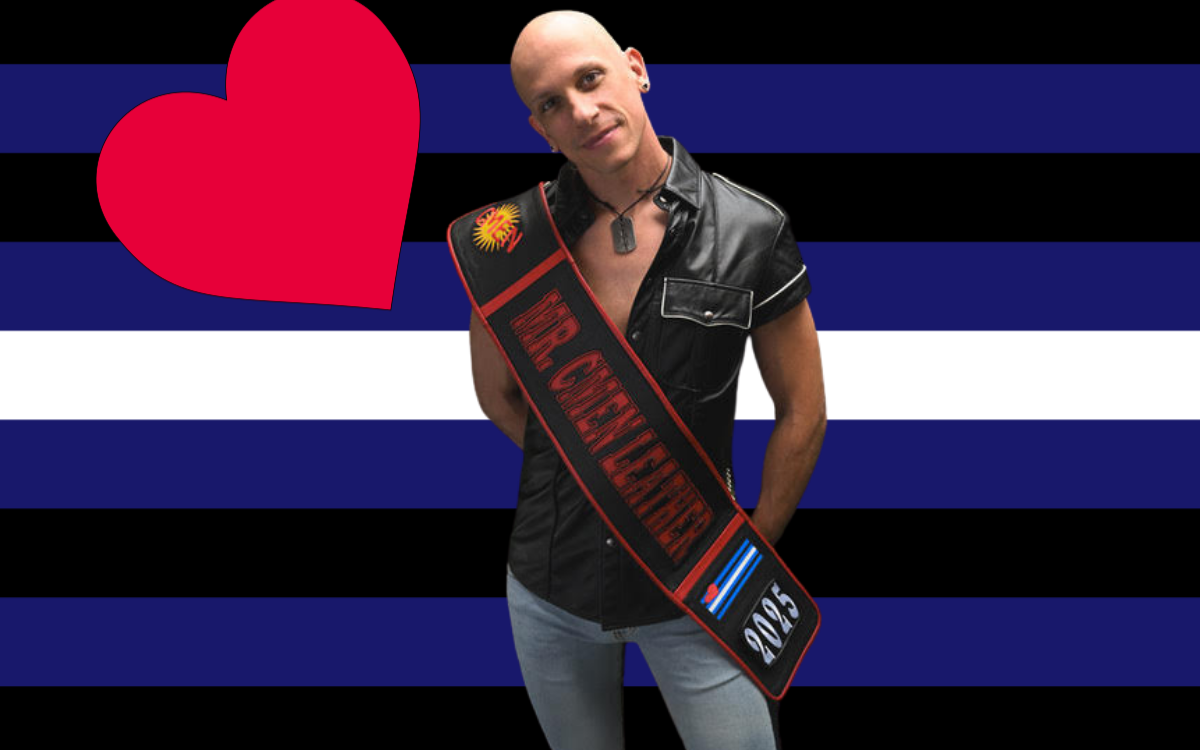
California Men Enjoying Naturism (CMEN) is an international social organization for gay and bisexual men who enjoy naturism. West Coast Gatherings were first held in Malibu in 1999 and have grown to draw over 500 male naturists from throughout North America, the Pacific Islands, and Europe. CMEN has been holding a Mr. CMEN Leather contest each year since 2000, and in 2003 it became an official International Mr. Leather (IML) Pre-Event.
The Mr. CMEN Leather title honors a member who embodies leadership, community spirit, and a commitment to bridging naturist and leather values.
Winning Mr. CMEN Leather 2025 isn’t just about strutting your stuff in a corset and boots – though this year’s titleholder rocked this look effortlessly. Equal parts storyteller, naturist, and leather-clad Babe with a capital B, Paul Gosselin brings poise and panache to everything he takes on, whether he’s producing a melodramatic dramedy, baring it all in the name of authenticity, or bridging communities that are often stigmatized or misconceived. With sharp wit, an XXL heart, and just enough fringe to keep things interesting, he’s proving that vulnerability, visibility, and a bulldog harness can go a long way.
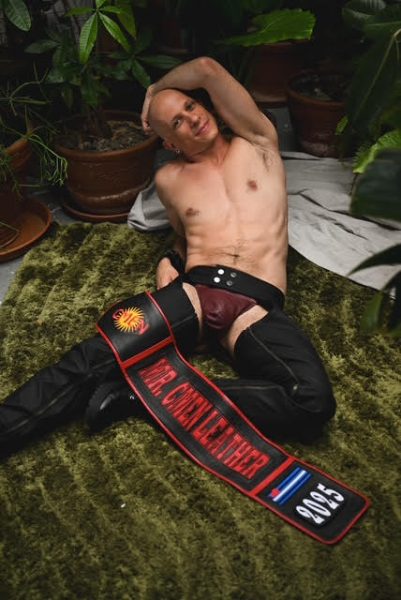
We snatched a second of his time to talk leather, naturism, and the pleasure of finding power in your own body.
What was your motivation to run for Mr. CMEN Leather 2025, and what was the most meaningful part of the experience for you?
I actually ran for the first time back in 2019 after attending the camp for a few years. I’ve always felt a pull toward leadership. I was class president in high school, so there’s this part of me that thrives in those kinds of roles. The idea of holding a title like Mr. CMEN Leather felt like a continuation of that energy. It felt like a way to have a seat at the table, to be more involved and respected within the community.
The most meaningful part of the experience has definitely been the personal growth I’ve gone through since that first run. In 2019, I was really cocky. I genuinely thought I was going to win <laugh>. But I had a lot of growing to do, and I wasn’t aware of that at the time. I ran again last year and was first runner-up, and then this year, I won. And I believe that growth – working on myself, learning more about the leather community, and about CMEN – really shaped who I am now and how I represent the title.
How do you plan to use your title over the next year? Are there any causes or initiatives you’re passionate about?
I’ve been talking with a lot of other titleholders, and it’s interesting. Each title has different expectations. Some are required to fundraise for their bar or organization. But with CMEN, there are no strict requirements. It’s actually really open-ended, which gives me the freedom to shape the year how I want. So, while I don’t have one specific cause locked in just yet, there are a few I’m exploring. I want to wait until things are finalized before speaking on them publicly.
That said, I do joke that my platform is going to be moving all events to the daytime. I’m too old for a 10 PM party! I’d love events that start at 2 or 3 PM and wrap by 8. That might sound like a joke, but I’m very serious about making that a reality for my fundraisers and events <laugh>.
You represent both the leather and naturist communities, which can seem quite different. How do they intersect for you?
It really comes down to showing up as your authentic self. One of the questions asked during the Mr. CMEN interview was how to bridge the gap between the naturist and leather communities. That question forced me to reflect on both the differences and similarities, and there are more similarities than people think.
Both communities are rooted in self-expression, individuality, and strong senses of community. I love being naked, but I also love throwing a leather piece on my naked body. For the competition, I didn’t wear full formal leather. I wore a corset, a little leather hat, arm sleeves with fringe, and leather boots. It was a mix of both worlds, and it felt really authentic to me.
That blend of values and aesthetics is what I want to bring to my title year – showing how these communities can coexist, support each other, and grow together.
You’ve said that the naturist and leather communities aren’t separate chapters, but part of the same book. Can you expand on what that means to you?
We’re all made up of different parts, different experiences, interests, and identities. For me, naturism and leather are just two parts of the same story. They’re not mutually exclusive. I don’t have to pick a lane. I get to live in this hybrid space where both of those identities thrive together.
It’s exciting to represent both communities because I can speak to both audiences from a place of genuine lived experience. It makes the title even more meaningful to me.
What are some things the naturist and leather communities could improve upon or work toward together?
<Laugh> There’s always room for growth. That’s something I’ve learned these past few years. CMEN, for example, is run by an older generation, and I’m part of a younger wave that’s helping to shape its future. The same is true for the leather community.
We need to stay open to change, to evolving how we do things, and to embracing new perspectives. As long as we move forward with open minds and the belief that growth is always possible, I think both communities can thrive.
Let’s talk about Misguided, your dramedy inspired by soap operas. How does that kind of storytelling reflect your own journey and identities?
It’s been interesting trying to incorporate my leather identity into Misguided, especially since I started the show in 2014, before I really became part of the leather community. So now, rather than drastically changing the storyline, I’ve found small ways to bring in that part of me, like wearing more leather pieces, even if it’s just a bracelet.
Looking ahead, I’m excited to create new work that reflects more of who I am now. Future stories will definitely weave in more of the communities I belong to.
Do you have a blooper or funny anecdote from working on Misguided?
<Laugh> I don’t know if “blooper” is the right word, but getting this latest season off the ground has been a journey. I wrote the last season in 2018 and released it in 2019. Then, of course, 2020 happened. When I started writing again, I had no idea what the world would look like post-pandemic.
Then came the Hollywood strikes. And then, tragically, Jackie Zeman, who played my mom in the series and had been on General Hospital for 45 years, passed away. So this final season has been an emotional ride, but in many ways, all those obstacles shaped a really meaningful conclusion.
You’ve also performed in Mortified, where people share cringeworthy and vulnerable stories from their youth. What was that experience like?
It’s kind of like The Moth but focused on teenage angst. It’s vulnerable, hilarious, and deeply healing. One story I shared involved me asking a man online for tips on, uh, giving a blowjob <laugh>. And I documented the entire conversation in an online blog. Reading that aloud to an audience was terrifying but also kind of wonderful.
Another story was about the fan letters I wrote to the producers of Guiding Light. Telling those stories allows me to embrace my inner soap opera enthusiast and remind younger Paul that he was always on the right path, even when it didn’t feel like it.
Speaking of younger Paul, if you told him that he’d become Mr. Leather, how do you think he’d respond?
<Laugh> He’d be so confused. Like, “You don’t own a single piece of leather, what are you talking about?” But I think that’s the beauty of growth. Life takes us in unexpected directions. And now, I’m part of two incredible communities that I never could’ve imagined back then.
Do you remember your first taste of the leather scene? What was your first leather purchase?
After moving to LA, I went to The Bullet Bar in the Valley. It’s a fantastic dive bar and the first place I heard about the International Mr. Leather competition. That’s where the idea first hit me – maybe I could do that one day.
The first leather piece I bought was a burnt brown bulldog harness from Rough Trade. I didn’t want a basic black harness. Though, in hindsight, black really does go with everything <laugh>. But I loved how that harness was made. The staff helped fit me, showed me how to adjust it—it felt like being fitted for a wedding dress, though I’ve never had that experience! But it was personal and welcoming. It really made me feel like I was stepping into something special.
Do your artistic and community work influence each other?
Absolutely. The naturist community especially influences my everyday life. When I’m at CMEN’s West Coast Gathering in Big Bear, surrounded by nature, stripped of all distractions, it reminds me to live without judgment and to bring that presence into my life beyond camp.
The leather community, on the other hand, gives me a sense of strength and power. It affects my posture, literally and metaphorically. Both communities give me different but equally meaningful tools to show up as my best self.
How does today’s political climate affect your work and the stories you tell?
It’s more important than ever to tell stories, especially those from underrepresented communities. Representation really does matter. Even if a show like Misguided isn’t groundbreaking, it’s still showing queer relationships, soap opera melodrama, and real slices of life. Sometimes that visibility is just as important as revolution.
What’s one misconception about the naturist community you’d like to clear up?
That it’s all about sex. It’s not. Is sex a part of life? Sure. But naturism isn’t centered around that. It’s about presence, authenticity, and community. Are there spaces where sexuality and nudity intersect? Of course. But that’s not the core of naturism.
Rough Trade filled you with the glee of a bride-to-be. Paying that sentiment forward, how would you go about welcoming in someone who might be curious about the leather scene but hesitant to explore it?
That’s a great question. I think it kind of already happened in a way. We had two younger guys – well, younger than me – participate in the competition this year. They both had harnesses, so they were somewhat involved in the leather scene already, but it was still their first time running and their first time at CMEN.
I spent some time talking with them about the leather community – what’s out there, what they can get involved in, where they can go to learn more and grow. Whether it’s local meetups, bars, events, or different organizations, I think just knowing those spaces exist makes a huge difference. Especially for someone new, it’s about discovering the community and realizing there’s room for you in it.
So, regardless of who they are or where they’re coming from, I’d try to point them toward those welcoming spaces, places where they can start building their own path.
Final question: If there were a poster for the leather scene, what would be the motto or catchphrase?
Oh my God, I feel like whatever I say is going to get me in trouble—no matter what I pick, I’m going to piss somebody off.
If you’re not pissing somebody off, are you even living?
Exactly! Maybe that’s it! I love it. But, no, what can I say…
There are three core principles that were drilled into my head during the competition: trust, honor, and respect. I think whatever the poster ends up looking like—whether it’s a boot, a pair of chaps, or a Burnt Brown bulldog harness, those three words should be front and center. They’re the foundation of what the leather community stands for.
Features
“Small is all”: L.A. Councilmember Ysabel Jurado discusses “small” but impactful moments of queer joy and political victory
The Blade sits down with Ysabel Jurado, the first queer Filipina woman to serve on Los Angeles’s city council
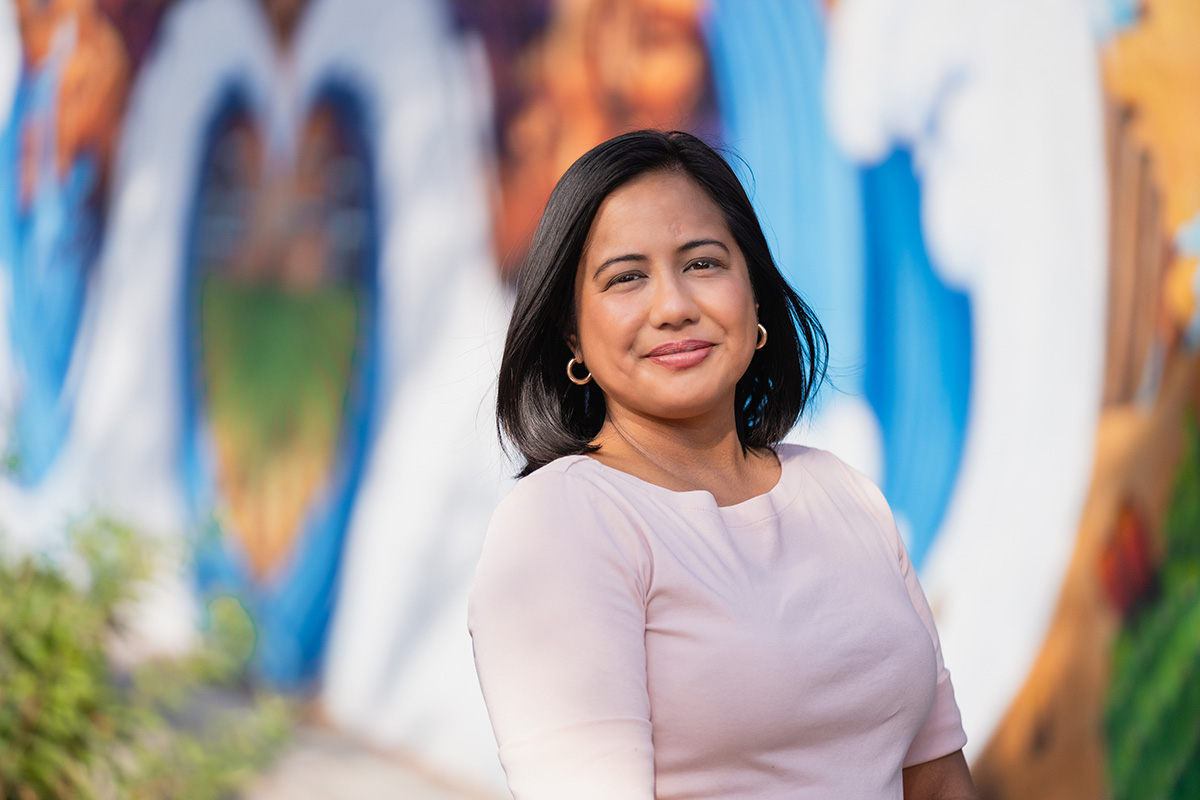
When Councilmember Ysabel Jurado was elected to the city council at the end of 2024, she was navigating a seat embroiled in mistrust. She beat out the incumbent of Council District (CD) 14, Kevin De León, who had been ensnared in a scandal after an audio recording of him making racist remarks was leaked in 2022.
Suddenly, Jurado was having to navigate complex bureaucratic systems as she tried to regain constituent support and spark positive, tangible change. A first-time elected official, Jurado had previously worked as a tenants’ rights attorney and housing advocate. While equipped with legal expertise, she was embarking on this foray into governance from scratch.
Her approach is informed by her organizing background, as well as the intersections of her core identities: a single working mother, a child of immigrants, and a newly out queer woman.
Jurado sits down with The Los Angeles Blade to discuss how she is navigating her political journey, as well as her personal queer journey as she tries to create a more equitable environment for her district’s residents.
It’s been about a year since you were first elected to the city council. How has it been for you so far as a first-time political official, and what have some of your challenges and wins been so far?
Being a beginner is something that is always a very humbling process: navigating the bureaucracy while trying to deliver immediate results for working families, especially while governing during multiple crises. I think figuring out the bureaucracy was something I expected to be challenging, but the crises that unfolded: wildfire recovery, the ICE raids, the budget shortage, all of those things just really compounded on one another. That made it hard to learn straightforwardly, and it was like fits and starts and fits and starts.
I think balancing the urgency of addressing systemic issues and the slow pace of government processes doesn’t always make sense, so that is definitely challenging. You know, wanting to meet the moment and then the bureaucracy just being so elaborate, and being unable to do it quickly, is always something that frustrates me.
Victories — we’ve been a nimble team for a while at City Hall and in the field, and now that we’ve grown, I think that’s something that is exciting on its own, and allowed us to immediately respond to the wildfires because we were in such close proximity to Eaton. We got through our first budget cycle, and we definitely had a bunch of wins, even as a first-year council member. We gave people an opportunity to ride the bus to give public comment at Van Nuys City Hall through a budget bus, we secured funding for long-term solutions to the construction and lighting up of the Sixth Street Bridge, and we also secured funding for public restrooms in Skid Row through that process.
A couple of other victories were passing fair wage ordinances for fast food workers and tourism workers. [There’s also] the reopening of The Pantry as a champion for the district and for workers, and guaranteeing that the city incentives made it so that the new owner would commit to allowing the workers to unionize, which was why they closed in the first place. So, I think that was super important.
And then, of course, our immediate response to the ICE raids, connecting local business owners and workers to resources, and last but not least, the renovation of the Convention Center. That is definitely something we worked hard on for the Downtown revitalization.
It’s coming. The Renaissance is coming back to Downtown, and we’re working hard for that.
It feels like most of your efforts are really concentrated on helping the everyday people: those who are most marginalized and those belonging to working-class communities. You were just saying there’s this pacing issue in terms of bureaucracy. How do you reconcile that mismatch in pacing when I’m sure you’re getting a lot of community response where they’re telling you their most urgent needs?
I think that’s something that we as a team are continually trying to grapple with: understanding that our role is different from where we were before. Now, we are actually part of the government. Now, I have to restart and begin again as an organizer in a different landscape. So, learning who those players are to make the work easier — in the city hall family and bureaucracy — to know who we are supposed to roll with to make these things go faster, is something that our team is trying to quickly learn to be more agile.
It’s learning the acronym soup and learning who the people are that we call and that we trust in the city family to make sure we can do these things quicker. That’s really what our job is: to learn the landscape and the tools that are at our disposal that weren’t available to us before, so that we can add value to movements or organizations, instead of duplicating what’s already been done.
That’s really what the focus is: to make sure, as part of our community ecosystem, we’re adding value. We are in this space for a reason, and we’re here to advocate for these marginalized communities: people of color, people who have been policed, people who are LGBTQIA. And so, in this position, how can we intervene?
You say your organizing has gone through an evolution, and you’ve been through several personal evolutions of your own that have led you to your current political service. How do all of those different transformations or life experiences; like being a former tenants rights attorney and advocate, a single mother, a queer Filipina person; how does that all inform your approach towards your political work and really being in the community?
I appreciate that question a lot. You know, it’s like, I live my life. And how I live and who I am is at the intersections of all of these identities: daughter of immigrants, queer, woman of color, working single mom. And it’s at these intersections where a lot of these issues converge and compound. And because of, not despite those experiences, it has made me be resilient and overcome certain things, or surpass the stigma to do the thing that I want to do — and continue to keep doing it.
So in that regard, the identity of being the “other” has made me so resilient. That has actually given me the life experience to be able to survive and do well in this political atmosphere, and even in a bureaucracy. Because in this political atmosphere, it’s like, “Well, you don’t deserve to be here.” And in the bureaucracy, it’s like, “Well, this is not how things are done.” And it was like: Well, me being here is a testament that I don’t take “no” for an answer, and that even if you do say that to me and my community, we still somehow exist anyways. So, my philosophy that I gained from my experiences working in these communities is that people already live the way that they live, right? And it’s really our government and the social systems that we as humans have designed that have made it harder for other people to live.
The government has all the resources and stewards them — how do we make that distribution more equitable, whether it means there’s more Rec and Parks services in certain communities or lighting and trash pickup to make it feel safe, and whether there’s a need for less policing in certain communities? That’s where I think the rubber hits the road for me in terms of how my life experiences and my identity as the “other” really imbue my philosophy with how I intend to govern.
You’re new to governance and political work, but also new to being an out queer person. In a different interview, you mentioned that you felt like an “impostor” during your campaign for city council. How did you navigate that as someone new to both political spaces and queer spaces?
I won an award from an identity group, the Asian Democrats, and when I got up there, I was like, “Why me?” I was just putting my head down and doing my work, and I don’t think that’s worth applause. Then, I took a step back and I thought: Wow, even my reaction to that is very Asian. My dad was a hardworking dad, but whenever Father’s Day came around, you’d ask him, “What do you want?” and he’d be like, “I don’t need anything, and you don’t need to celebrate me, because I’m just doing what I’m supposed to do as a father, which is provide. And that’s how I show you my love.” So, a little bit of that is kind of where I’m at when people are like, “Well, you’re the first, and this is your identity group.”
When I take an additional step back from my AAPI upbringing, and I think about it in this moment, this is a big responsibility, especially now, not to cower and hide. Even if I may be scared, I still have to lead and not just for myself, right? For all the others around me to make sure that our existence is validated and that we are not going to give up. That’s a real responsibility I have now as the only out council member in the city of L.A. This year and the backdrop of this administration have brought a lot of duality, a lot of yin and yang to some moments that have really brought me a lot of joy.
We got to host our first Pride at City Hall, which was so amazing. I had so much fun. We hosted two drag performances at City Hall for the first time ever. And, our drag performer, Simply Cebuana, was like, “I got my citizenship.” They had immigrated here. They got their citizenship, and that was the first time they’d ever been at City Hall. They felt welcomed, and they got to be their whole self there, and they were crying. It was the intersection of gender, sexuality, immigration, and it was like: This is why I do it, right? It felt so powerful because we get to create these spaces where, before then, we hadn’t been in. It inspires me to take up more space.
But later that day was also really sad, because that was the first terrible day of the ICE raids. Then, it felt like this day of joy was robbed of us, and the rest of the month, and maybe the rest of the term, because of this administration, because of the terrorism that they’re now putting upon us. So I think it’s been definitely yin and yang, but still trying to remain hopeful and continue to be a leader in these tough times and continue to not cower. As people who have had to concede so much, I don’t want to concede anything — and definitely not easily, right?
I was interviewing two AJSOCAL policy advocates recently, and they’ve been spearheading this new initiative that champions LGBTQ+ civil rights for AAPI communities. They shared similar sentiments of how there’s just so much despair with the current administration, but it’s the intertwining of queer joy with their work that propels them forward. Could you share a story of your own, about a personal moment of queer joy or revelation?
I’m a queer mom of queer kids, and I remember going to Children’s Hospital Los Angeles (CHLA) for a protest because they were deciding to pause gender-affirming care while caving to the federal government. One of the folks there, I believe it was a doctor, was talking about how important it was for them to provide this work because it was just so fundamental to freedom, to choice, and to making sure that the joy people felt was equitable. It really just hit close to home for me.
Maybe folks conflate that Pride is just a party, but really, it’s a celebration of our wholeness and the humanity that we all deserve. And so being there with one of the kids and with the TGI community at CHLA and fighting for it — even though it feels like losses — was a reminder. I just saw them and other kids, too, how important it was for them to feel seen at that age. Me coming out later in life, [I thought] Oh, if I had been seen earlier in life for who I was, how much of an impact that would have made on me. I think it’s like moments like that: for them to know that they are so supported. Even though it’s a struggle, it’s very enriching to my life and my work, because the struggle is, unfortunately, something we know that’s familiar to us. So, we know how to fight through it, even in the most hostile of circumstances.
And yet, that event was a reminder of the community that we’ve created for ourselves that can keep us safe, and reminds me of why I must keep going, which is for the multigenerational, multi-ethnic coalition of people to keep going forward. I usually enjoy these events when I don’t speak, because I get to hear others and be inspired. But that was one of the moments that I was just like, from parents to providers to the children themselves and just the folks that were out there: those everyday people and those conversations are really the ones that stick with me the most and remind me when I have to make some tough decisions of why I gotta keep going.
Could you speak more on the importance of encouraging youth or younger people to take part in civic action and embrace visibility, whether as queer people, people of color, or people of other marginalized communities?
Visibility looks different for people in different ways, right? It doesn’t always mean showing up at the rally. It may be in those small moments, or it may mean having those difficult conversations with your family — which I’ve had over and over again, and which I’m sure any queer person can attest to.
I’m a big believer in that “small is all.” I like small moments, believe it or not. I’m an elected official. We’re supposed to be doing big, flashy things, but it’s really those small moments that, when you look back at the end of your life, actually make up most of it. You’re just chipping away, even in your relationships that mean the most to you, to change minds or engage, to expand your mindset, to have those conversations.
But I think making sure that when it’s safe for you, you do stay true to who you are. Stay weird. I have decided to just be myself. And apparently, that was something that was relatable enough that people elected me to be a council member. But the more I became myself, the happier I was, and I became visible in ways that I never thought I would.
What is pushing you forward now into this end of the year and into the next year? What are your priorities, personally and professionally?
I think personally, it’s to find some sort of balance with my professional and personal life. I’m still a mom. I’m still a daughter. I’m still a partner — and I’m still me! I’m trying to return to those simple moments where I’m walking my dog, listening to nothing, without any phones, where nobody can find me for 30 minutes.
Returning to making sure I have that and the time with my family just being sacrosanct, I think. And my chosen family, which are my friends from before I was an elected official — who will be there even after — I think a goal of mine is to make sure that I show up for them.
Professionally, we’ve gotten almost one year under our belt, and I feel like we’ve figured some things out, and there’s so much more to go. But I’m excited for the next year in really delivering on our priorities and making sure that we can execute and have more results. And, meeting more people. This year has been a lot of internal building. We made the building, and now we can go back out there to meet other folks.
I want to make sure that the city, or at least CD 14, is a place where people can live, age well, raise a family, feel safe in their professional and personal time, protest in peace, and go to the park and still feel safe. I like to say: CD 14 is where everything happens. And I want to make sure that everyone, whatever identity group you come from or intersect at, can feel safe in all of these spaces.
Jurado will be presented with the 2025 Trailblazer in Justice Award, celebrating those who break barriers, open doors, and pave new paths, by the Los Angeles Blade and Asian Americans Advancing Justice SoCal at the Justice organization’s 42nd Anniversary Gala on October 16th at the Westin Bonaventure Hotel in Downtown Los Angeles, starting at 6:30 pm. Click here for more info.
Features
Over the Edge and back again: One woman’s journey through loss, grief, and healing through community
This intimate interview shares one woman’s journey through grief and healing after losing her wife, and how participating in Over The Edge became a tribute, symbol of resilience, and celebration of chosen family

Grief has a way of changing our lives in a flash. It has the power to isolate us, undo our sense of identity, and leave us swimming in a sea of questions that have no simple answers. But it can also bring unexpected community, strength, and even moments of joy. In this conversation, one resilient woman shares how the loss of her wife became the beginning of a new kind of connection – one that involves a bereavement group, a giraffe costume, and rappelling off the side of a building to raise awareness while fundraising for a good cause. Through humor, community, and vulnerability, Denise McCanles found a way to honor her late wife Michelle’s memory while helping others navigate their own journeys of grief.
Can you tell us a little bit about what inspired you to participate in Over the Edge and how you honor your late wife’s memory through this experience?
After my wife passed away, I started attending a bereavement group through the Cancer Support Community. It ended up helping me more than I could’ve imagined, especially since, around the same time, my mom was dying and my siblings went kind of… off the rails. Their political views shifted, they moved to Tennessee, and I talked to them less and less over time. It was a very lonely time.
That bereavement group became my family.
So when I saw the Over the Edge fundraiser, I wanted to give back. These people were, are, incredible. I decided to rappel for the fundraiser and wear a giraffe costume in honor of my wife, Michelle. She had a business called Small Giraffe Production, and she was a director, producer, and big fan of giraffes. She actually owned a giraffe costume, so I wore it as a tribute to her.
That’s beautiful. This giraffe onesie… is there more to that story?
Yes! I have to share this, because it really shows how special that group is. We had joked about the giraffe ears as part of the costume, and when they came to pick me up for the event, every single one of them was wearing giraffe ears. I just burst into tears. It was such a beautiful, supportive moment.
What made you decide to take on the challenge of rappelling in the first place? Was it a tough decision?
No, not really. I’ve always liked a challenge. I tend to do things that scare me, and this definitely qualified. Plus, I thought it would be fun. Especially in the costume. And honestly, no one else volunteered! But I really wanted to do it.
Would you say Over the Edge is a bit of a metaphor for you? What do you hope people see or feel when they witness you doing it?
Oh, definitely. Michelle battled cancer for 13 years. It was a rollercoaster. Over the Edge is a good metaphor for that whole experience. Sometimes you feel like you’re over the edge of your sanity, because it’s just so hard. But also, after seeing someone you love die in front of you, you start to feel like you can do anything. There’s a strange kind of strength that comes from that.
And I have to say, the Cancer Support Community is amazing. I’ve been in a lot of support groups – caregiver groups, grief groups, therapy – and nothing compares to this one. Our facilitator is phenomenal. We’ve even kind of become the unofficial “poster group” for Over the Edge. They always use our giraffe-ear photo on the fundraising page.
What impact has your bereavement group had on your grieving process?
Huge. Life-changing, really. I tried three different grief groups before this one, including one at another cancer center and one at the LGBTQ Senior Community Center. None of them really clicked. But when I joined this group, I felt like I was home.
Everyone is kind, generous, and respectful of each other’s time. In other groups, sometimes people monopolize the conversation, but this one is so balanced and supportive. Just the other day, I asked if anyone else talks to themselves, because I’ve been doing it more and more, and started wondering if I’m losing it. And they all said, “Of course we do!” It’s that kind of connection, being with people who get it, that makes such a difference.
Does that inner dialogue you have with yourself act as a coping strategy for your grief?
Yes, definitely. I also talk to Michelle. And I know not everyone believes in this, but I’ve gotten so many signs from her, things I can’t explain. I’ll ask for a sign, and suddenly a light starts blinking. I just know it’s her. I’ve even seen a medium who told me things she never could’ve known. We were together for 33 years. That kind of connection doesn’t just disappear.
What advice would you give to couples hoping for that kind of longevity?
Patience. And therapy. I have five siblings, and among three of them there have been 11 marriages and 13 divorces. Michelle and I were together longer than all of them, and for most of that time, we couldn’t even get legally married.
Relationships take work. We went to couples therapy many times, especially in the early years. I think a lot of people give up too quickly, or they expect it to always be easy. It’s not. But it’s worth it. I found my soulmate. And even though I lost her, I still feel incredibly lucky, because a lot of people never find that.
Grief can be a very personal, private process. What has it been like for you to share your story so openly?
I just want to help people. I used to do stand-up comedy, I love making people laugh. But I also love helping people. Everyone grieves differently, but if I can offer anything, it’s to be patient with yourself. People try to give you advice or tell you what you “should” be doing, and honestly, there’s no right way to grieve.
Some days I didn’t want to do anything. Michelle and I used to love going to movies, and I still haven’t really gone back to the theater. I’ve had to figure out new things that bring me joy. It takes time. And the people who haven’t gone through this kind of loss? They often have no idea what you’re feeling. That’s why finding a group is so important.
You mentioned that you were a stand-up. What role has humor played in your grief process?
Oh, it’s huge. Humor has always helped me cope. I bring a lot of laughter to the group, and there’s a lot of humor there, believe it or not.
I’ve also started doing something called the Thera-Trumpy Booth. It’s my little Lucy-from-Peanuts therapy booth, but for Trump-induced anxiety! I take it out to protests and parks. People come by, we laugh, we talk politics, and they hit a Trump doll on a stool to release some tension. It gets me out of the house, talking to strangers, connecting. And sometimes, it even brings up grief. People share their stories, and we find common ground. It’s unexpectedly therapeutic.
Where did the idea for the Thera-Trumpy Booth come from?
Back in 2016, I had the idea. I remembered Lucy’s booth and thought, What if I did a version for people anxious about Trump? So I built it and started bringing it around. I actually kept it in my garage all through the Trump presidency, just in case. Turns out I was right to hang on to it! It’s funny, I’ve always been a kind of performance artist. This feels like the perfect blend of activism and comedy.
Have you ever had an interaction with a Trump supporter at the booth?
Oh yeah. Some just shout “Trump!” as they walk by. One guy asked if I’d shot Trump. I was like, “If I had, I wouldn’t have missed!”
But one moment really stood out. I was surrounded by women talking about politics and life, and this man just stood there listening. I could tell he was a Trump supporter, but he didn’t interrupt. And eventually, we had a civil conversation. He was Canadian, strangely enough. But it reminded me that sometimes – not always, but sometimes – people are willing to listen.
Let’s talk about identity. After 33 years with your partner, what was it like to rediscover who you are on your own?
That’s one of the hardest parts. Who am I without Michelle? We were a team, a duo. I lost my best friend, my sounding board, my partner in everything.
Even with my family, I felt disconnected. My mom was the one person in that group who made me feel like I belonged. After she passed, and then Michelle, I felt like I had no place left in the world. I’m still figuring it out. Even today, I find myself asking, What am I doing?
But I do know I want to make a difference. That part hasn’t changed.
What advice would you give to someone who’s newly grieving and wondering if they’ll ever feel strong enough to do something like what you do?
You can, it just takes time. Honestly, I stayed home for a long while. And I’m a very outgoing person, so that was hard. But grief takes over. For me, maintaining my mental health has been about movement. I swim every day and ride my bike. Exercise has always been important in my life, but after loss, it became essential. Even if it’s just getting outside for a walk, fresh air helps. They say nature helps with depression, and I believe it.
Depression and anxiety have been constant companions for the past two and a half years. I’m still dealing with it.
My advice is: don’t judge yourself. If all you can do today is stay home and watch Netflix, then that’s okay. If you need to cry, cry. If you just need to sit in silence, do that. You have to feel the grief. If you try to stuff it down, it will find its way out, and not always in healthy ways. So let yourself feel, without shame or guilt. That’s the most important thing I can say: don’t judge your own process.
And I promise, little by little, you will start to feel better. Six months ago, I probably wouldn’t have said that. But healing happens slowly, unevenly. And eventually you start to feel moments of light again. When you’re ready, try to find community. At first you might feel like being a hermit. I sure did. But try not to stay in that space forever. Find people who’ve gone through something similar. That connection can make all the difference.
“OVER THE EDGE”
Saturday, October 4th
9am – 4pm
Andaz West Hollywood, 8401 Sunset Blvd
SIGN UP TO RAPPEL — Fundraise individually or as teams! OR;
GET TICKETS — Cheer on rappelers at the Landing Party, $25 (Kids are FREE!)
Refreshments and light bites
Family-friendly music— DJs HXRØ and MoonGoon
Glitter tattoos
Cash bar
Aura Portrait Sessions
Sign-Making & Cheer Station
…and more!
Visit www.cancersupportla.org
Features
Jeff Deguia and Lan Le are making sure queer AAPI liberation is no longer an “afterthought”
The Blade speaks with two policy advocates championing LGBTQ+ civil rights at AJSOCAL
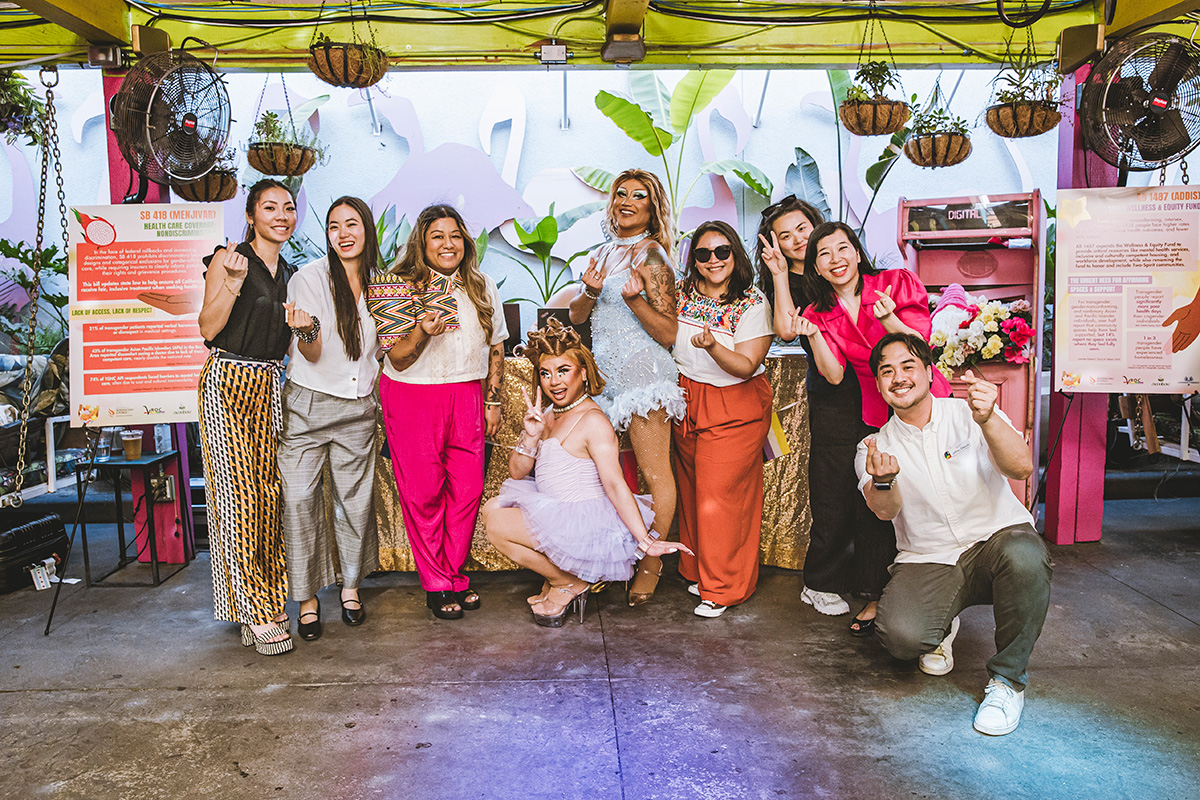
Asian Americans Advancing Justice Southern California (AJSOCAL) is a civil rights organization dedicated to providing resources, education, legal support, and other crucial culturally-competent resources to AAPI communities. The group was formed in 1983, propelled into action after the racially motivated killing of Vincent Chin.
Anti-Asian sentiment has long proliferated within the U.S. From the Chinese Massacre of 1871 in Los Angeles and the subsequent enforcement of the Chinese Exclusion Act to the internment of Japanese Americans during World War II, to the more recent 2021 Atlanta spa shootings and the rise in hate crimes targeting Asian Americans since the start of the COVID-19 pandemic — AAPI communities have faced cultural, political and systemic discrimination and violence that organizations like AJSOCAL are trying to mitigate.
The organization partners with community groups to provide multilingual legal advice and representation, bystander intervention training, citizen application workshops, and is engaged in active political advocacy to ensure that lawmakers understand the importance of codifying laws that prioritize the safety and rights of AAPI communities.
In 2024, AJSOCAL formed its new Queer Transgender Asian Pacific Islander (QTAPI) initiative, the AAPI Queer Joy Coalition. Spearheaded by LA regional policy advocate Jeff Deguia and supported largely by Sacramento-based policy advocate Lan Le, the group is focused on working with other advocacy groups to lobby for policies that are inclusive of LGBTQ+ community members. Earlier this month, three bills they had prioritized in their efforts passed legislation and are now waiting on Governor Newsom’s signature.
AB 1487, AB 678, and SB 418 aim to expand the state’s Transgender, Gender Nonconforming and Intersex Wellness and Equity Fund, require the state’s Interagency Council on Homelessness to improve access and services for unhoused LGBTQ+ individuals, and strengthen coverage around gender-affirming care, respectively.
The Blade had an in-depth conversation with Deguia and Le about what led them into civil rights community work, what they’re doing with the AAPI Queer Joy Coalition, and how they are paving a path forward that prioritizes the lives and freedoms of queer, trans Asian Americans.
Could you introduce your policy background, how you first got into social justice work, and where that’s led you?
Lan Le (she/they): I’m completely new to policy advocacy, actually. What motivated me was that my family and I are refugees from Vietnam, and that meant that I often had to be the interpreter and the advocate for my parents as a child. And, you know, given that I was a child from the provincial countryside, that was really difficult. Everything was bewildering, and it’s still difficult now, even as an adult, because I wasn’t just translating words — I was trying to translate entire systems that weren’t built with families like mine in mind. And what was the most disheartening was that the services that were meant to help us often fell short because they weren’t designed to be accessible. Language access was always treated as an afterthought, and it was never a line item in these agencies’ budgets.
Before joining AJSOCAL, I worked directly with survivors of domestic violence, human trafficking and sexual assault for another nonprofit called My Sister’s House. I’m a survivor myself, and I had hoped that my lived experience would be useful in that line of work, but I quickly found out that the outcomes were often really awful, especially for youths who’ve been trafficked, including many LGBTQ+ youths. It was really difficult for me to do that type of work, because I was reminded again of my own helplessness, and that’s why I think I pivoted to policy advocacy, even though it’s daunting and completely new to me. I felt like it’s the path towards systemic change, and I would hope that this is a way for me to make sure that accessibility and equity were non-negotiable, that it would be a line item in the state’s budget.
Thank you for sharing. How long did you work at My Sister’s House, and when did you start at AJSOCAL?
Lan Le: So I worked for My Sister’s House for two years, and then I started AJ So Cal last year in April.
Jeff, can you share your story?
Jeff Deguia (he/him): I am the current LA regional policy advocate at AJSOCAL. I’m also new to policy, like Lan. I’ve been with the policy team, gosh, I think just over two years. I’ve been in the organization for nine years, initially on communications, doing media marketing, press stuff. And I kind of realized that I missed the partner connections and the community work.
And then this opportunity pulled up with policy, and I was like, “I don’t know if I’m the best fit, because I don’t really have this great technical background in policy.” I’m asking Lan and the team, like, “How do bills pass in the process?” and about line items and penal codes. I’m still trying to learn the jargon and how things work. But, I think like Lan said, being able to see the correlation between system changes and working alongside communal organizing on the ground, and being able to meet them at that same level, within the government and the legislature, is so important.
I am the first generation to be born here in the States [in my family]. My parents are Filipino immigrants. I’m from Chicago. And luckily, in the Philippines, they teach English in schools. So my parents were able to navigate to a good extent. But in Chicago, there’s not a huge population of Asian Americans, especially where I grew up in the suburbs. So without that community care and sharing of knowledge, we really wouldn’t have known how to do anything, you know?
I think growing up in a majority white suburb of Chicago in the 90s, we were all being teased like, “Are you Chinese? Why are eyes like that?” And then pulling their eyes back. I think my parents saw me be upset, and my dad was like, “Be proud of being Filipino and correct them.” That early conversation when I was seven really set me up for this belief that I matter and that my roots are important. My culture and who I am is deserving of being in this country, and that our place in history and our community is important as well. He was a big part of why I have this prideful understanding of being Filipino and just being who I am.
And I think as I got older, all the intersections of being queer, Filipino, a child of immigrants — I really hold that pride and that kind of feeling close to my heart. I belong here, and every part of me deserves to be happy and deserves to have freedoms. And I think that’s a big part of why I’m in this work and I stay in this work, as hard as it is all the time. Because this country is not in a good place, and hasn’t really been. I just tell myself: I deserve to be here. So does my family, and so does my community.
Lan, what was your feeling of belonging growing up? I know you’re a refugee. Where did you end up settling and how did that feel growing up? Was there a sense of community or belonging for you?
Lan Le: My family and I arrived in Sacramento, and it’s actually where I reside right now. In terms of belonging, I always struggled with feeling alienated or isolated from others, because it was not only the fact that I didn’t speak English and the fact that I was a refugee from Vietnam. It was also my queer identity. And it was very difficult to find people who understood my perspective, because often I think I was ashamed because it wasn’t the norm. It didn’t meet the standard that my parents expected, and the community around me as well.
At some point, I was like: Okay, I’m done explaining myself. I’m done trying to justify my existence. I’m just going to accept who I am. I think actually, as a result of that acceptance, I’m more comfortable being open and vulnerable — and that was what has allowed me to be effective in my advocacy. Because when communicating these issues, I don’t just focus on the fact that these are distant theoretical political issues, right? This is very concrete and affects you personally. Do you want your family to have access to healthcare and education? Do you believe that elders should be taken care of at the end of their lives? So I think that allowed me to be more effective because they see how it directly affects them: the lack of language access, the lack of culturally competent mental health services, the downstream effects of U.S. foreign policy. These things are all a part of their story as well. So I try to focus on these issues.
What right now is really striking to you as important in your policy work, and how does that intersect with your different identities as queer AAPI people?
Jeff Deguia: I will say that my full stepping into my LGBTQ+ identity kind of happened during COVID. I’ve long been proud of who I am, but I think embracing every part of myself, even the feminine parts and feminine interests, [came from] actually understanding art that comes from a lot of trans femmes of color. So I just think having that moment in 2020, with reflection, and then coming to this place of like: Hey, actually, how are we being inclusive of LGBTQ+ folks in our AAPI community: in policy, and access to gender affirming care that’s culturally competent? How do we support parents in terms of learning how to best support their trans or queer children?
A lot of times there’s this idea of like, if young Jeff had this type of support, I think it would have saved a lot of pain and inner turmoil of: Who am I, and do I deserve to live like this and in liberation? And I think that’s been a huge thing. It means a lot to be doing queer, trans AAPI work, and we’re doing it with a lot of partnerships with others — partners who have done this work for decades. We’re trying to impart our policy abilities and policy knowledge to really bring those folks who have been on the ground for years, serving the community, to Sacramento. We realized that for a lot of our partners, they’re doing direct services, social programming, but they’re not necessarily able to get a seat at the table in Sacramento with elected officials.
We had our Jade Jubilee in June — which is our annual queer trans AAPI celebration — and Lan was helping train our partners before our legislative visits with different senators and senate members. In the beginning, they were all kind of like, “I’ve only done this once, and it was virtual. I’ve never done it in person.” A couple weeks later, they were killing it in the meetings, presenting all this data and sharing from the heart and from experience. I think seeing my partners be able to build a new muscle is the most rewarding thing for me.
Being able to see them grow has been the best, because I want to see more of us at the Capitol — queer trans AAPI folks. And to lead it is a privilege I hold really, really close to my heart.
Lan, I’m curious about what that training process was like. What were you imparting on people who, like Jeff was saying, hadn’t developed that “muscle” quite yet. How did you communicate those skills to them?
Lan Le: First, I acknowledge that the legislative process is challenging and complicated, and I struggle to navigate it as well. So, they’re not alone in terms of feeling intimidated. But for me, I just highlighted the fact that they are the experts of their own stories and lived experiences, and it’s important for them to communicate the story to these legislators. Because now, these legislators can see the impact of the policies.
I think some folks feel like they have to be prepared with all the statistics and the research when communicating with legislators. But the reality is, they get tons and tons of information all the time. They have staffers who constantly are updating them on the numbers. But what they don’t often hear from are the community members that they represent: their constituents. Most people aren’t able to drive to Sacramento and take a day off to wait several hours to talk to a legislative staff member or a legislator. So, they really value having that insight.
And you know, the QTAPI community, we’re very niche. Every time we have come to advocate for our community’s needs, everyone has responded really well to that, because they feel like: “Oh, this is something that hasn’t been at the forefront when we’re developing these policies.” These folks are not at the table, and we do need to take these people into consideration, because the challenges they experience — for example, language access — is something that’s critical for them. We need to do this in order for them to get the services that they’re entitled to. That was my approach: You are the expert of your own situation, so please just approach it as a way for you to share your story. People might have different ideas about how things should be done, but they can’t contradict your life experience.
Speaking more about the Queer Joy Coalition and how it was really first formed in 2024…Now there’s the great news of the three bills that you were prioritizing being passed, and they’re on the governor’s desk. How are you both feeling about that?
Jeff Deguia: It’s been so grim with the current presidential administration. I think it was hard to think that things could really be going well in terms of a legislative cycle.
There are a few votes in opposition from some conservative elected officials, but to just know that, for the most part, California is still pushing for us and for our community is great. It’s a big year because it was our first-ever bill package. So for them all to be there on the desk right now is big. I want those to get signed into law right away. I don’t like waiting. We’re not the co-sponsors, but we work pretty hard to make sure that we support others. We were advocating at the lobby day. It’s such a bureaucratic process, and for it to be at this point, I’m like: Okay, thank God. We’re so close. Let’s keep pushing.
I’m so glad. How did you feel about it, Lan?
Lan Le: It was such a huge sense of relief when these bills managed to pass, because I was attending the hearings where the opponents didn’t hold back in terms of their anti-LBGTQ+ rhetoric, or their homophobia, or their casual racism. When I’m in that space and they’re making these statements — it felt hostile. There are times when I didn’t feel safe, and it reminded me that “Oh, maybe I don’t really belong,” and, once again, I feel alienated and isolated. But fortunately, considering that all three bills managed to make it to the governor’s desk, that means that there is a lot of support. There are a lot of allies, and I’m just so relieved that people are prioritizing the needs of our community.
We were speaking about how bureaucracy feels a bit intimidating and unapproachable and complex. What are your day-to-day lives like working as policy advocates? How does the day start, and how does the day end? And how do you take a breather from it all as well?
Lan Le: So unfortunately, my day starts by reading the news, and then I’m very sad. So I take a mental health break. I go on YouTube, and I watch some cute animal videos, you know. And then I go back to work. Most of my time is spent on research and writing so that I can be more prepared when I’m talking with different stakeholders, including our legislators. And my objective is always to try to communicate the impact of these policy changes on the Asian and Pacific Islander community, especially the most marginalized individuals, which, of course, includes QTAPI folks as well.
That means that in order to be effective, I have to collect data and then try to create a compelling story using that data. So, for example, in communicating the response to H.R.1, the “Big Ugly Bill,” which, for context, has slashed over $2 trillion in federal funding for health care and food assistance. It also allocated $170 billion for increased immigration enforcement. I would communicate that by saying that, in California, 25% of Covered California individuals are Asian and Pacific Islander. With these budget cuts, it means that for many of them, their premiums are going to rise by up to 74% next year. That’s going to price a lot of people out of coverage.
So when we’re talking about these budget cuts, we’re talking about seniors who now have to skip their medication, children going without food, and survivors of domestic violence and human trafficking who are now avoiding courthouses and hospitals because they fear that they would be detained and deported, because they also happen to be immigrants. So throughout this entire process, I’m trying to communicate the harm, the impact. I’m also constantly working with our partner organizations like the California Immigrant Policy Center (CIPC) and the Coalition for Humane Immigrant Rights (CHIRLA) to try to coordinate public comments and advocacy visits to work on our talking points and see what we should focus on. And frankly, it’s the other advocates who keep me grounded and sane throughout this process, because otherwise I would just be in a blanket of despair.
Jeff Deguia: I’ll also do some light news, typically on social media, which is probably not the best avenue. But for me, I have lost a little bit of trust in Western media, especially legacy media. So I’m following organizers on the ground. I’m trying to keep up with Israel and Palestine. I keep up with trans community leaders as well. When I’m not working, I try not to doom scroll because my Tiktok algorithm is all social justice stuff — which is great, but sometimes it just makes you really, really depressed. So I’ll do some balance with some gay comedic chaos.
But I will say that I make sure that I’m connecting with partners on the ground, much like Lan does. Say, if a partner organization that might not historically do LGBTQ+ work, if they’re starting it, [I think] how can I lean into that, collaborate more, offer some more advice? I’m being sure that local actions are being covered, whether that’s immigration rights, whether that’s LGBTQ+, pro-trans items as well. I try to make sure that I’m not behind on my support letters or efficacy efforts, or rallying my AAPI coalition members to make sure that they’re putting in letters as well.
I’m always reminded that movement work is not short-term — it’s very long-term. Chances are, you won’t see the changes in your lifetime. But how do you work with the belief that I’m doing something productive, that I’m doing something that’s worthwhile, and there’s no promise of it ever coming together? But, you just have to put your energy in the faith and the hope that it’s gonna get better — that you’re adding to it, and that there are other advocates around you who are adding to that as well, and that you’re never really alone in this work. That people who look like you, who don’t look like you, have the same values as you, are the ones who will be ensuring that we’re giving the best effort we can to make the biggest impact we can, hopefully in a generation or two, or further down.
It’s so hard to be living in this work with no hope, [where] you’re not really seeing any type of measurable success, per se. But I will say when bills get passed, when rallies happen, when conversations change, when culture changes happen as well — I think that’s when we see the markers of actual, immediate change happening. It’s always little, small moments of connecting with partners and strategizing around what’s the best way of doing this, and trial-and-error that really make those moments happen socially. I think what’s been tough for me to realize, is that you’re really working in this hope of, “What could it be?” And, you just have to hope for the best.
As much as we get pounded down by the “opposition,” I just always want to believe that openness, inclusivity, and wanting to fight for everybody will always come out on top, because that’s the fight that deserves to be seen and heard. So, I just try to live in that kind of headspace. It’s hard, though, my God.
To kind of pivot back a little bit into policy work: What is on the plate right now for you both? What is the most important to you in terms of research and what you’re working on?
Lan Le: We’re working on our legislative and budget priorities for next year, and one of our bills, AB 322, has been made into a two-year bill, and so we’re trying to get that over the finish line in 2026. So, what happened was that AB 1355 was introduced. It died. And then there was a gut and amend, and then it was reintroduced and revived as AB 322, and then it died again. Now we’re going to try to get it through the finish line in 2026 because it was made a two-year bill in Senate Appropriations. The bill deals with location data privacy, and this is a really critical issue for immigrants, survivors, and folks within the LGBTQ+ community, because location data has been weaponized to target these communities.
For example, every time we use an app on our phone, our private location data is constantly being collected and then eventually it’s sold by data brokers to different people, including law enforcement, often without our knowledge or consent. And unfortunately, this data has been used to dox and out LGBTQ+ folks. And so that’s why we want to make sure we have effective guardrails to protect our community.
I’m also more interested in the AI regulation space because, you know, it’s everywhere, and the potential harm that it can cause is horrifying, but it also can create a lot of good as well. And I just want to make sure that there’s a certain level of transparency in the process, and to make sure that there’s a lot of people with a clamoring conscience, a lot of ethicists and attorneys around, and people like me as well to advocate for communities that are often rendered invisible. And, you know, often this is just an issue of fairness, like, how do we allocate these resources? What do we prioritize when it comes to our funding and budget? These issues affect all of us, so that keeps me going.
Jeff Deguia: I think as the year ends, it’s kind of a period where it’s reflective. I’m trying to do some convenings with our AAPI Queer Joy Coalition partners and some other queer, trans AAPI leaders in the LA area and OC area. As hard as this year has been adjusting to this new president, there are a lot of wins still, locally. And I want us to be able to highlight that and understand: How do we repeat it next year? How do we make sure that we can continue this work in a positive way?
I think also, I’ve seen that there’s quite a gap between our queer, trans AAPI partners and LGBTQ+ partners as a whole. I’m trying to do some bridge-building, because there are a lot of people like TLC, REACH LA, the Center, Equality California, who are really based in LA and OC. So, when they do have bills or collaboration or projects, they can say, “Oh, actually, let’s make sure that the AAPI [community] was included.” So I just want to make sure that, as the year closes, we’re making connections so that people can build on their own and build together.
Because the LGBTQ+ coalition at AJSOCAL is fairly new, what’s it like to be leading this force of change? Is it difficult to navigate this advocacy space as queer AAPI people?
Lan Le: Well, first off, Jeff is the mastermind behind AAPI Queer Joy, and he’s doing a great job leading. I’m so happy to be working with him. Honestly, it’s like a mental health break for me every time I communicate with him, because it feels like: Okay, there’s someone that I can share this experience with — who understands how difficult it can be in terms of being the pioneers. It’s daunting. I do feel like, sometimes, I overthink things, and I’m reluctant to speak up. But, I need to speak up because this is the only time our voices are heard. So, there’s that great sense of responsibility. I feel like, whatever small ways that I can push the needle in a good direction, I’m grateful for. Honestly, sometimes a win is just not a significant loss. I’m just grateful for that. I’m relieved.
Jeff Deguia: I guess it’s a little difficult for me, because I want to make sure that I am properly paying respects to the folks who were there before me, because there’s organizations that have legacy since the AIDS epidemic, and leaders who have been in this work since then. So, I want to make sure I’m taking into account their perspectives and their thoughts, their opinions, so that I can better inform my strategy and my movement forward. It’s something I don’t take lightly. I consider it a really, really big privilege for me to be in this space where I’m representing every part of my identity in this work. Ideally, in the next couple of years, we’re co-authoring or co-sponsoring a bill.
I just want to be taken seriously by assembly members and senators and our partners, and that when the AAPI community thinks of us, they think of their LGBTQ+ siblings. I hope that when the LGBTQ+ community thinks of the community, that they remember that queer, trans AAPIs exist. I don’t want to be an afterthought anymore. I want us to be a person in the beginning of planning purposes, [and that people say]: “Hey, we gotta make sure we have some AAPI people on this call or on this initiative.” I think I’m just trying to lead with ferocity, but also with the knowledge that I’m standing on people’s shoulders who came before me, and I need to pay respect to them as well.
For more information, check out Asian Americans Advancing Justice Southern California.
-
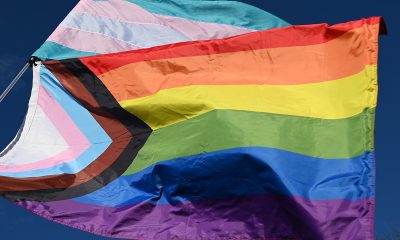
 California3 days ago
California3 days agoHate crimes targeting transgender and gender nonconforming people have tripled since 2013
-

 a&e features4 days ago
a&e features4 days agoAllison Reese’s advice? Take your comedic medicine.
-
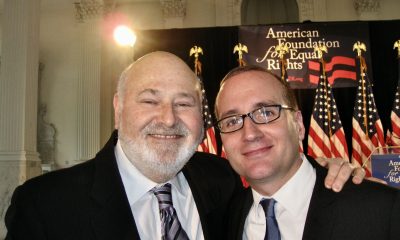
 COMMENTARY2 days ago
COMMENTARY2 days agoWhy Rob Reiner’s murder hit this old lesbian hippie so hard
-
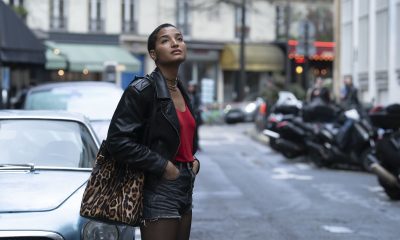
 a&e features2 days ago
a&e features2 days agoIndya Moore on history-making Gotham Award nomination and speaking out on social media: “It has complicated my access to work”
-

 Movies1 day ago
Movies1 day agoLong-awaited ‘Pillion’ surpasses the sexy buzz
